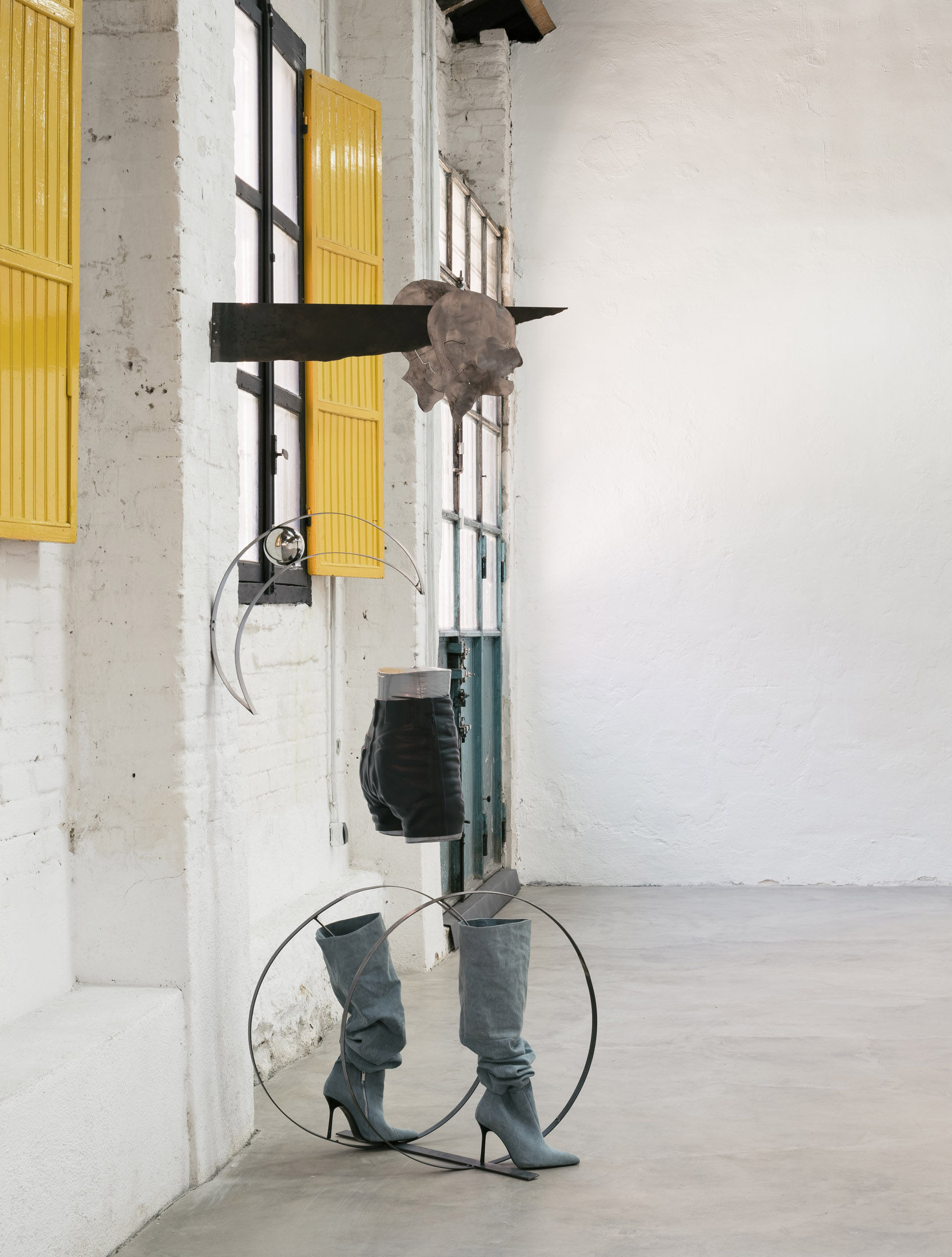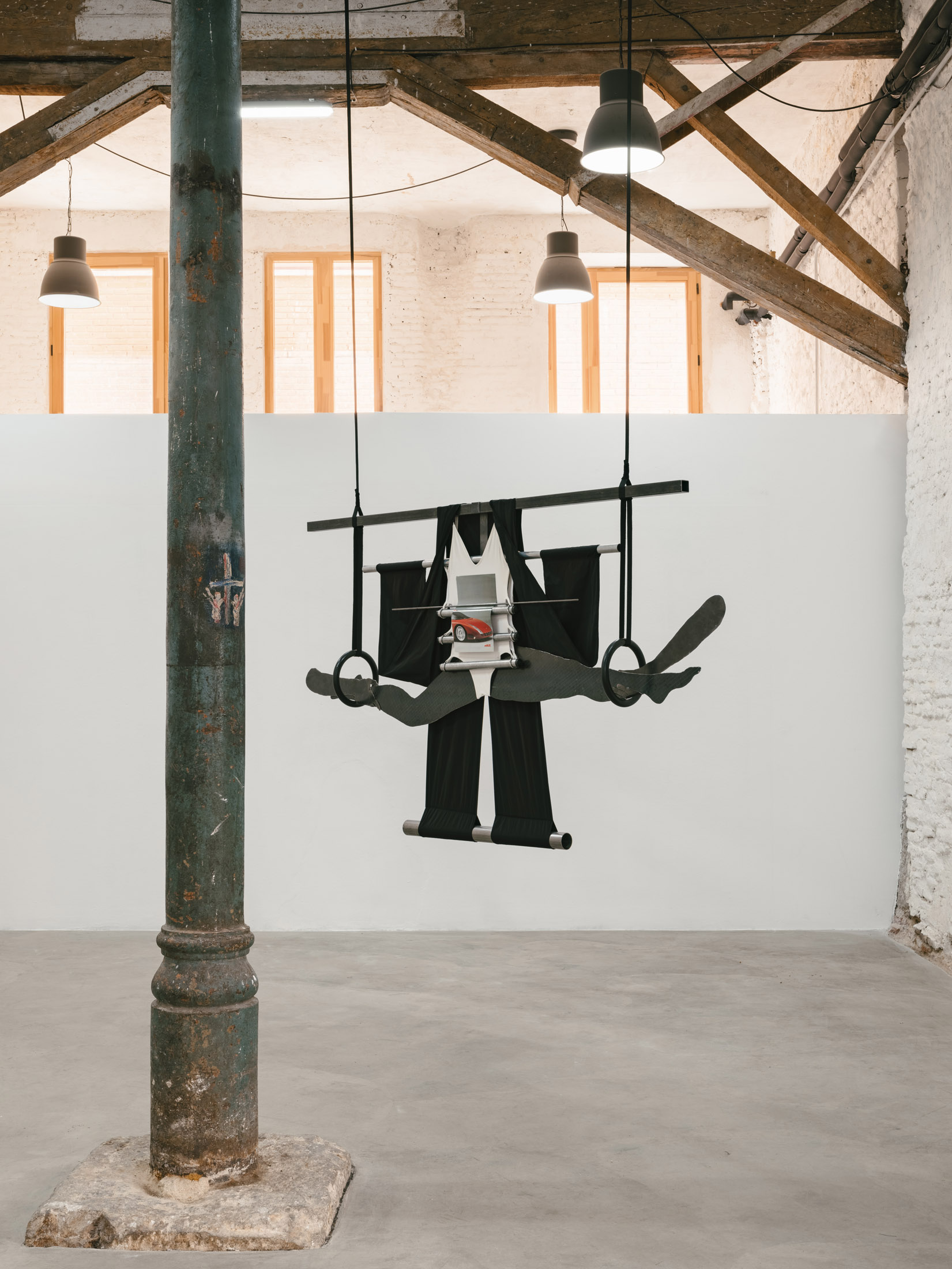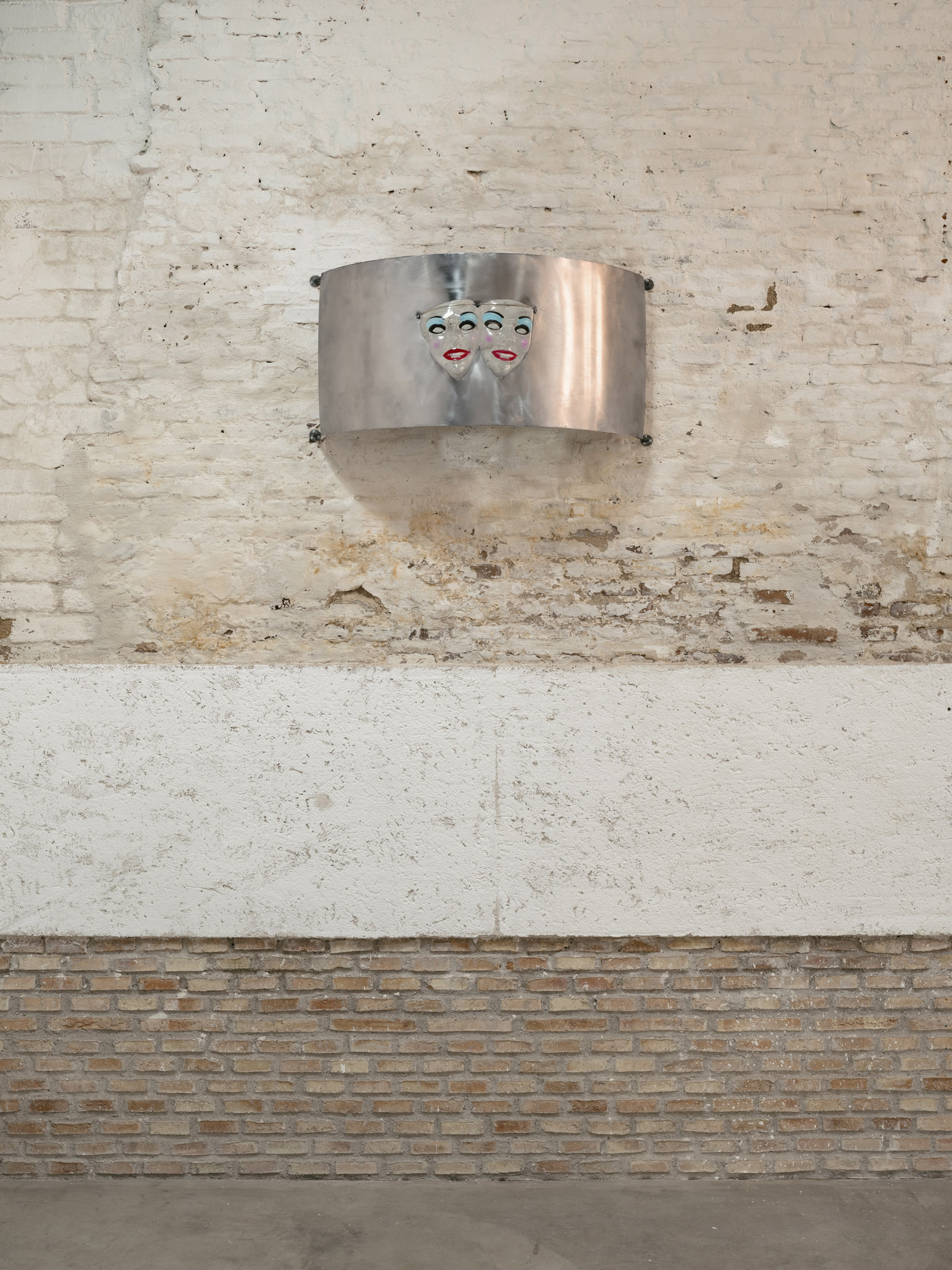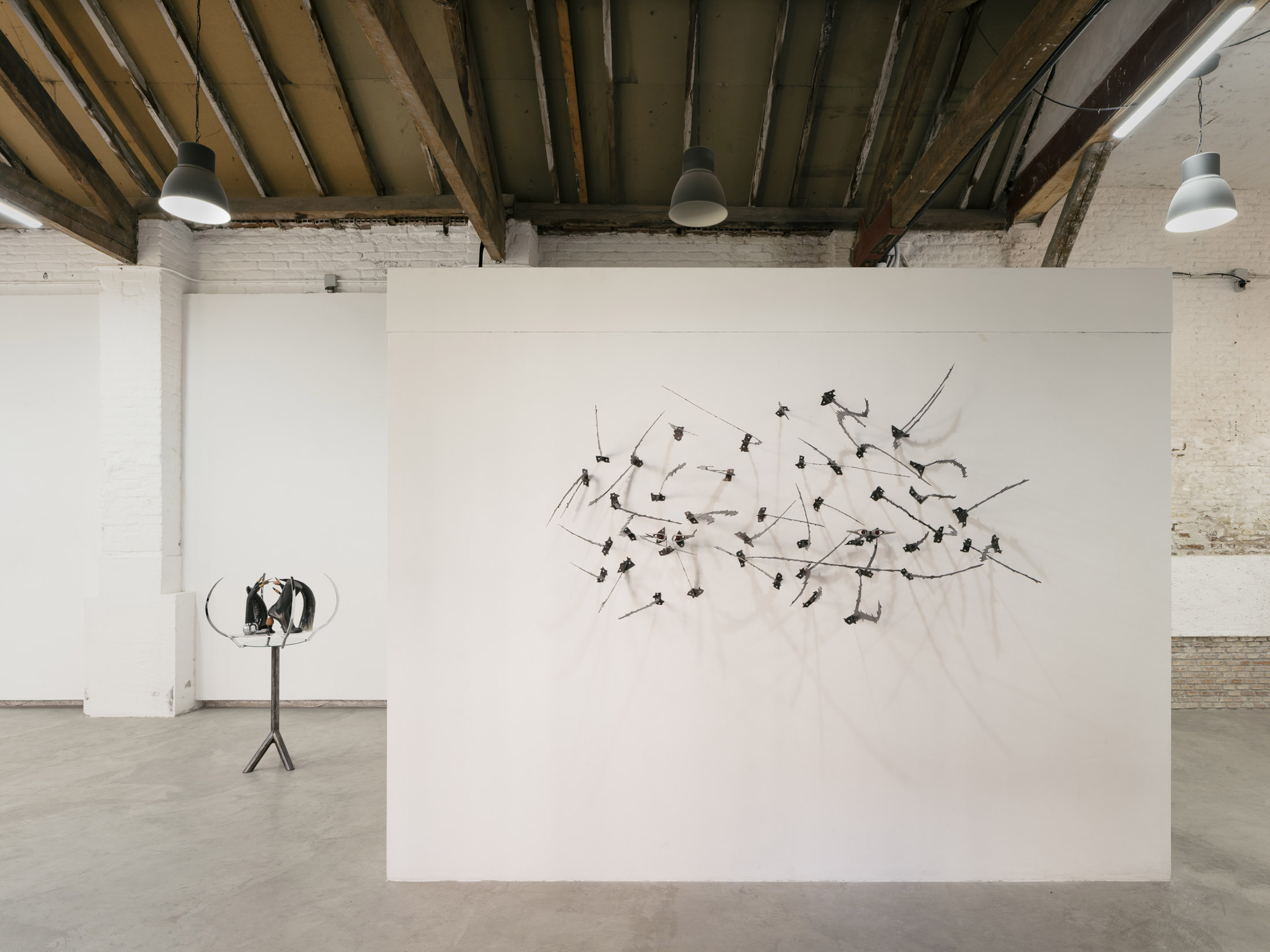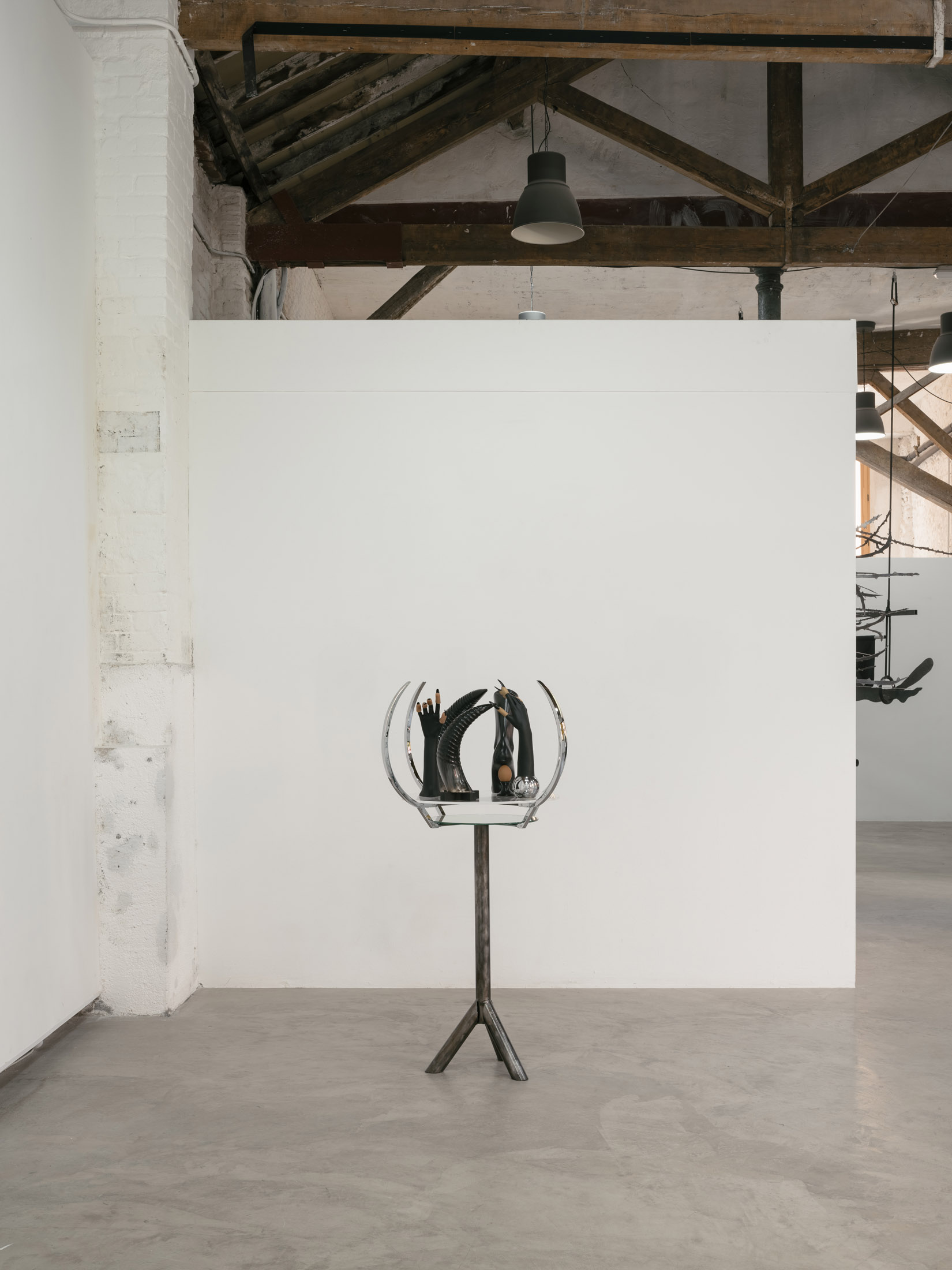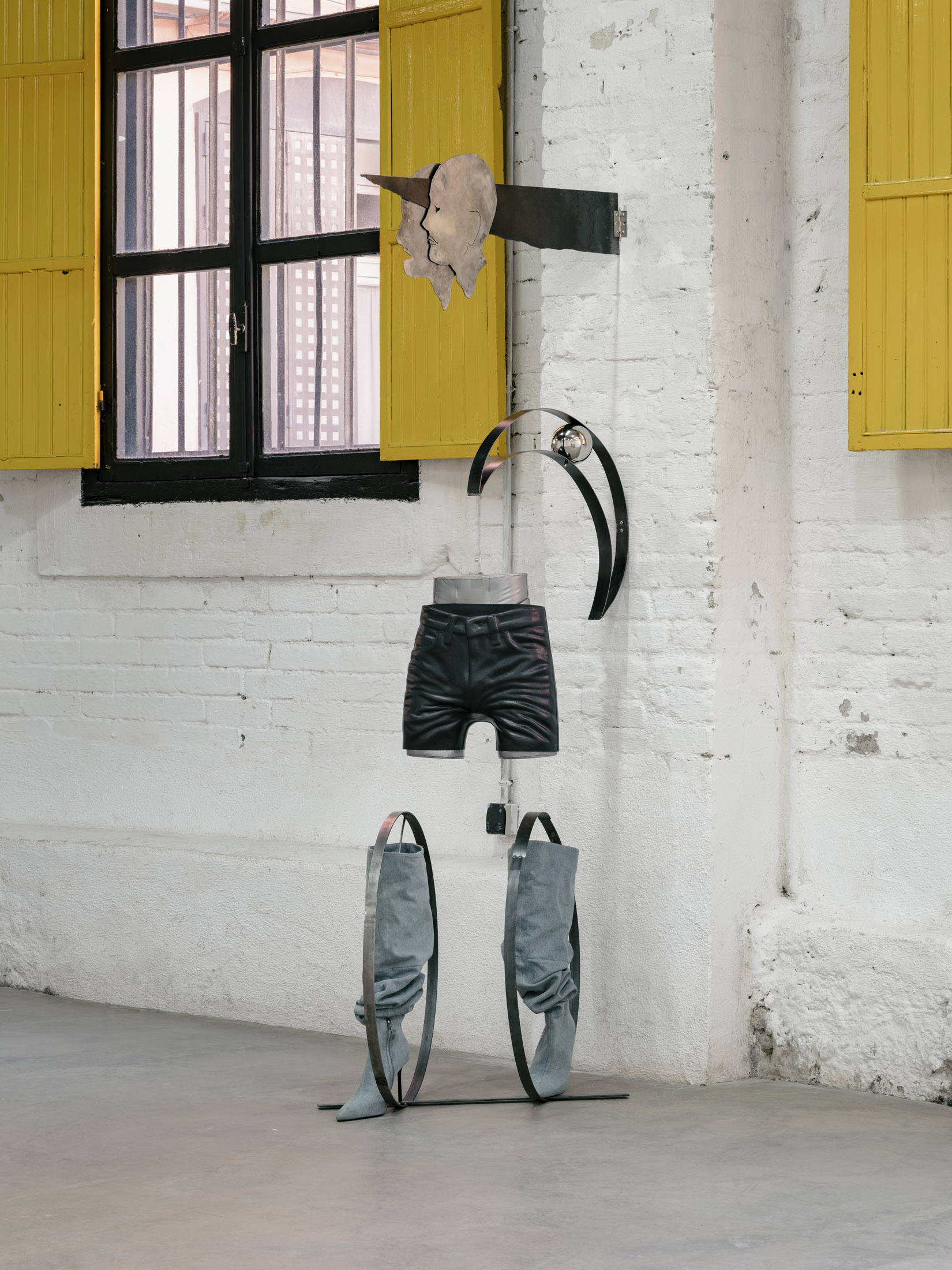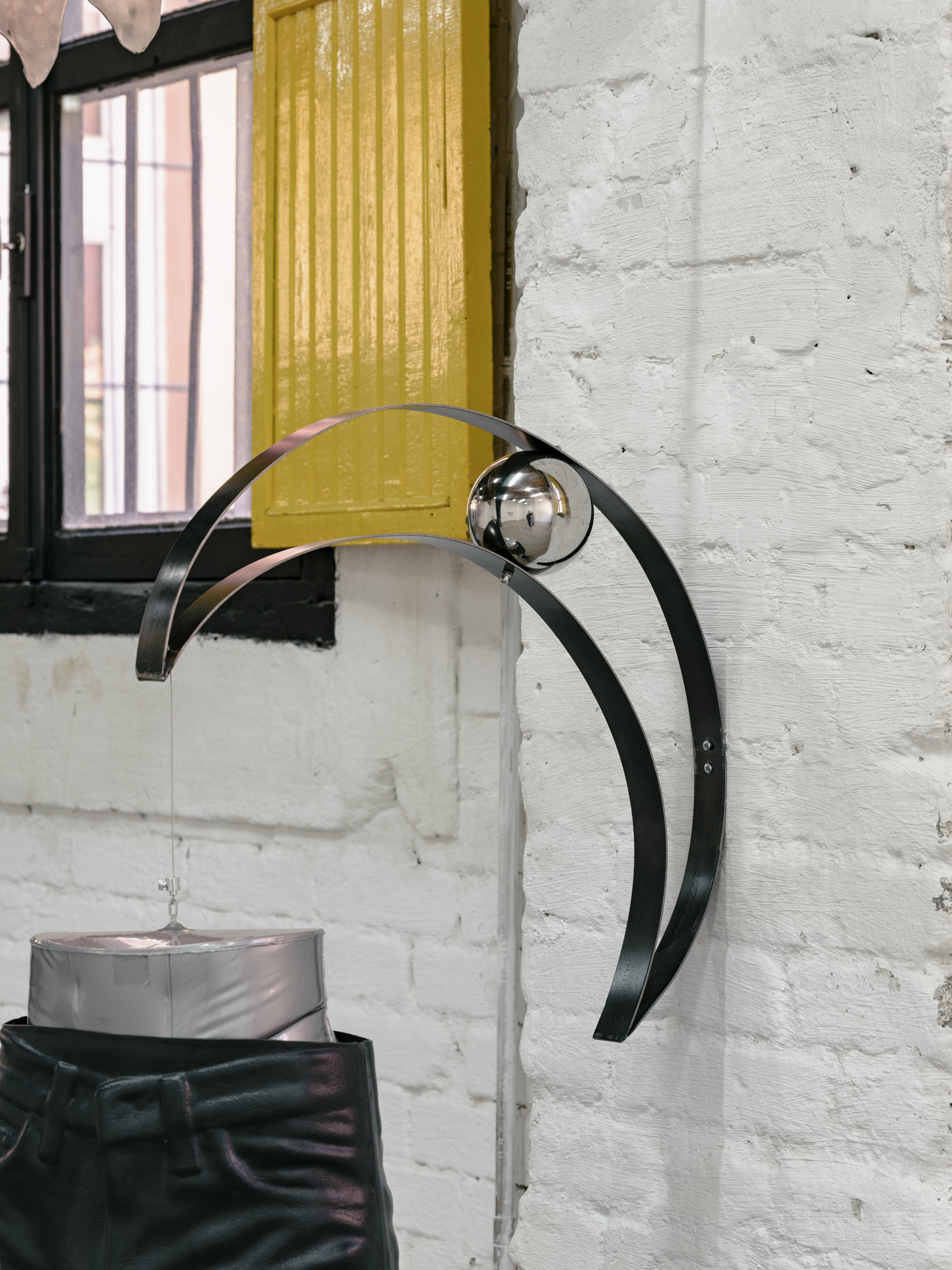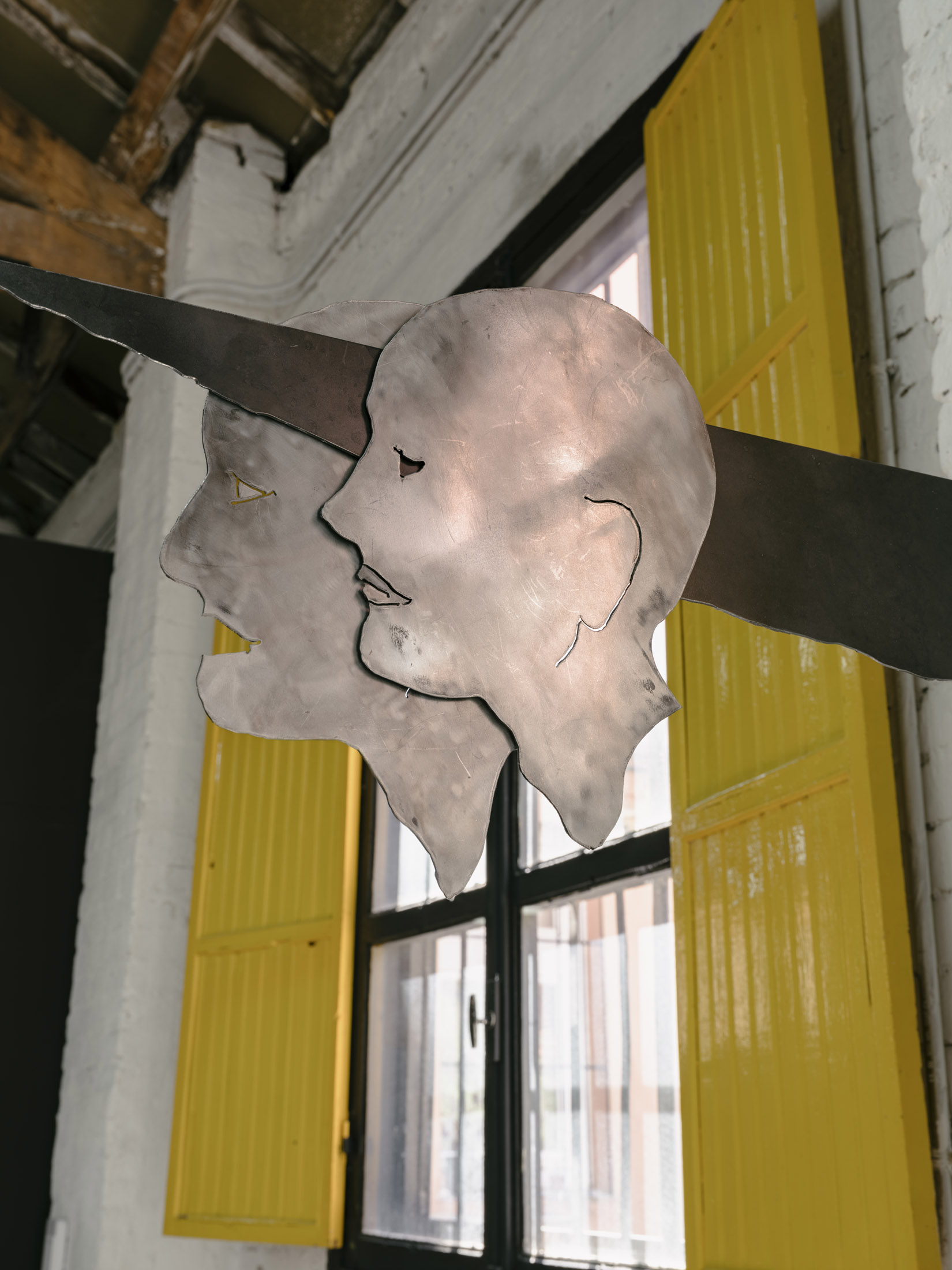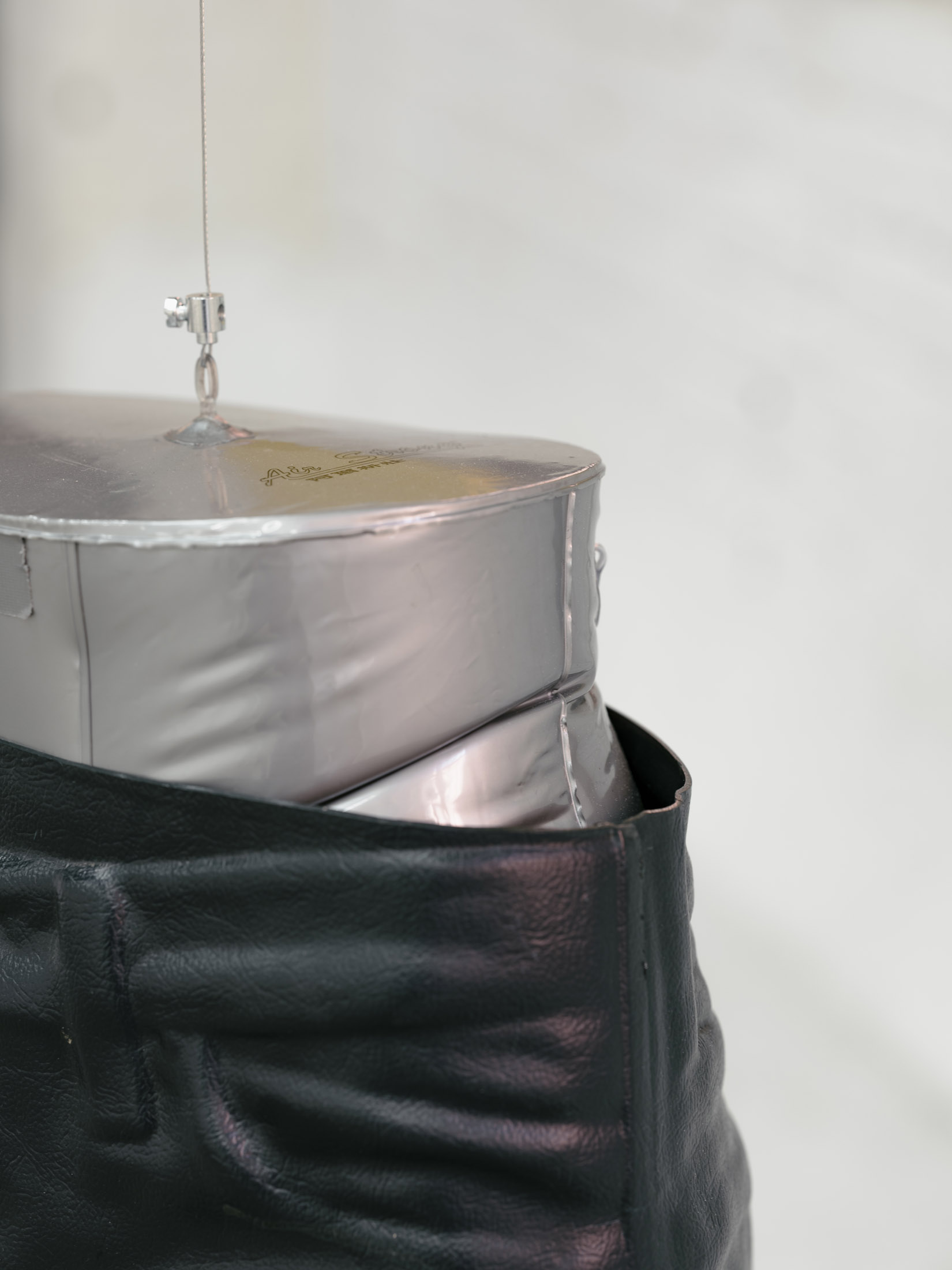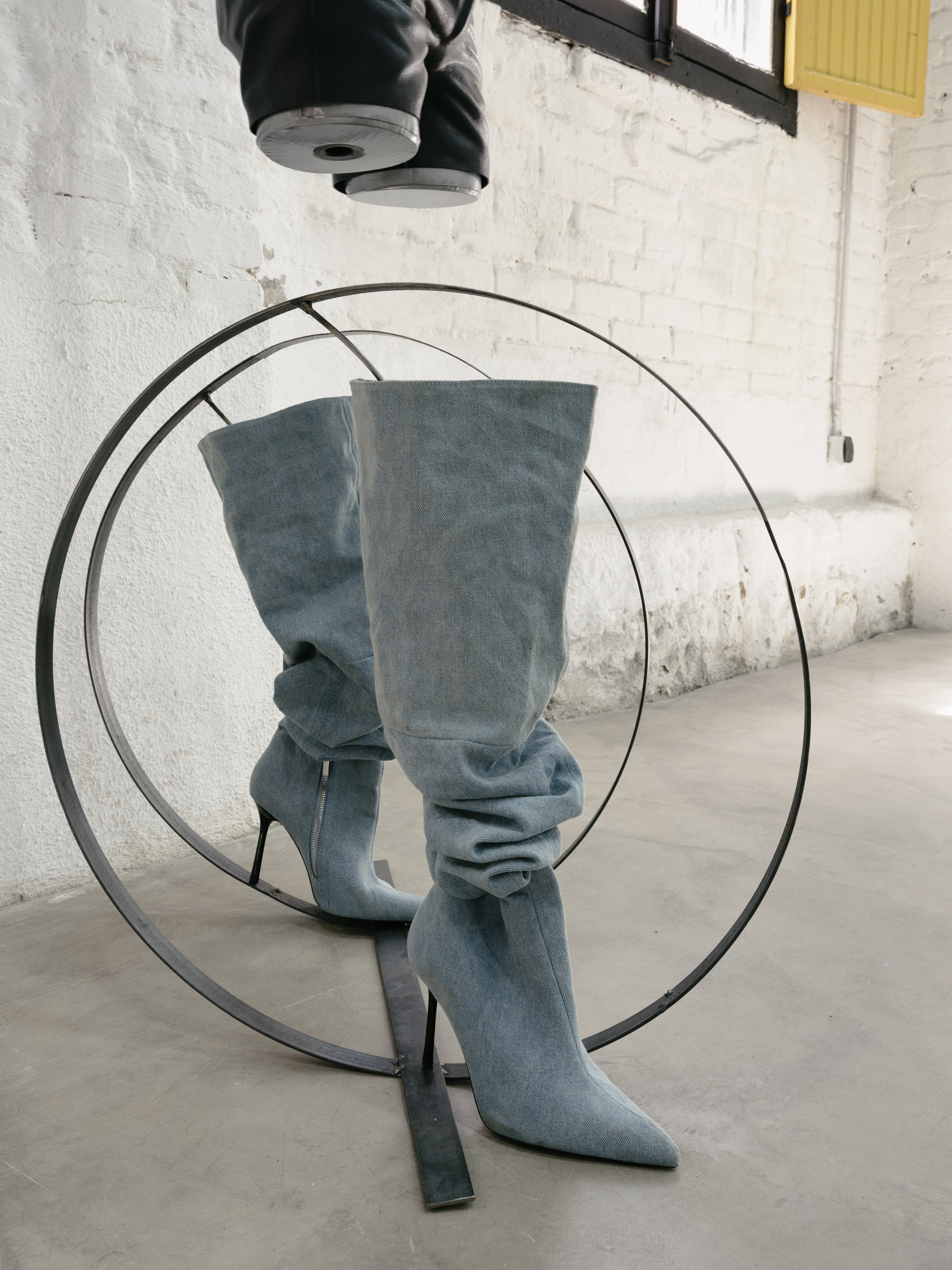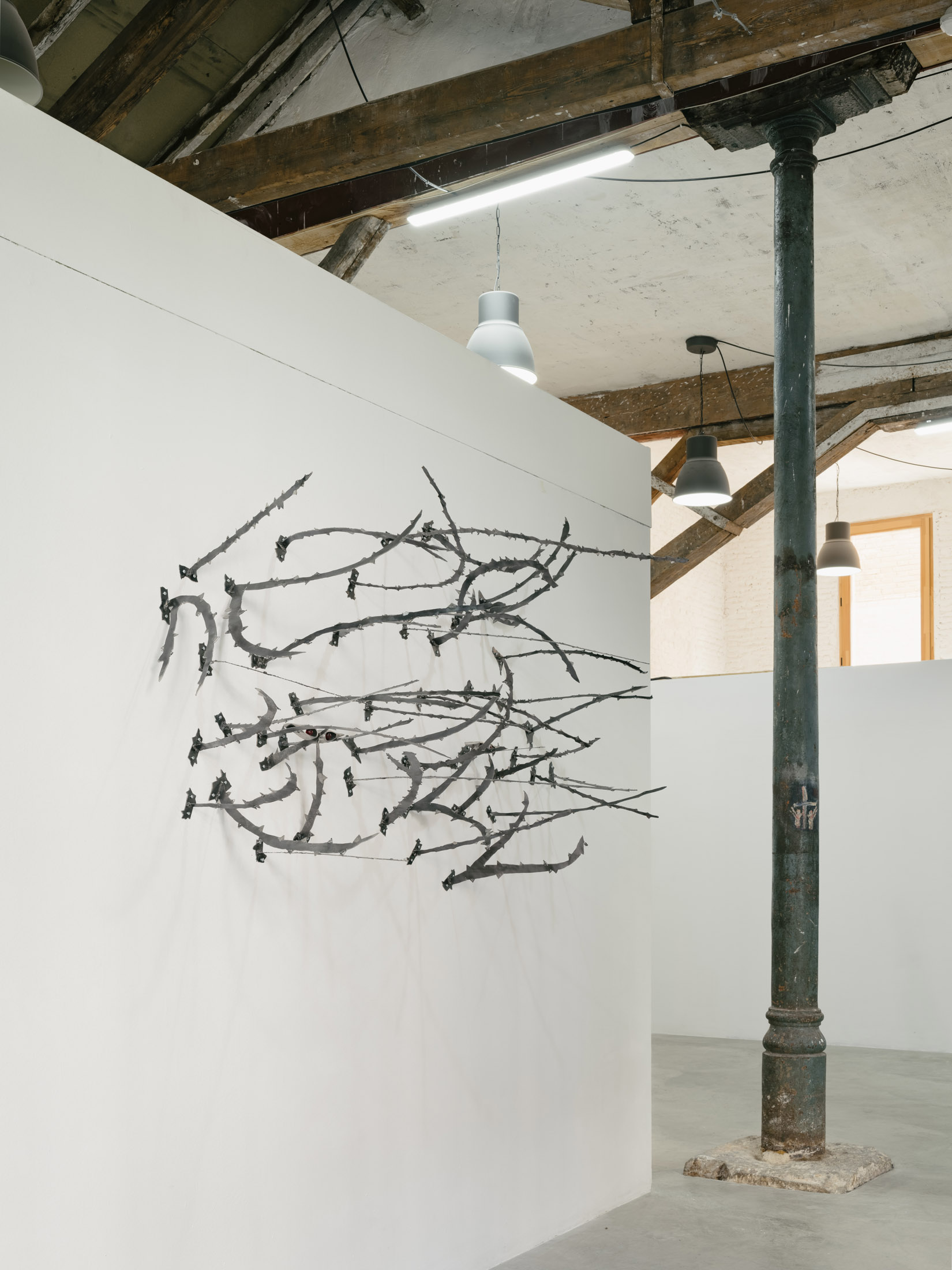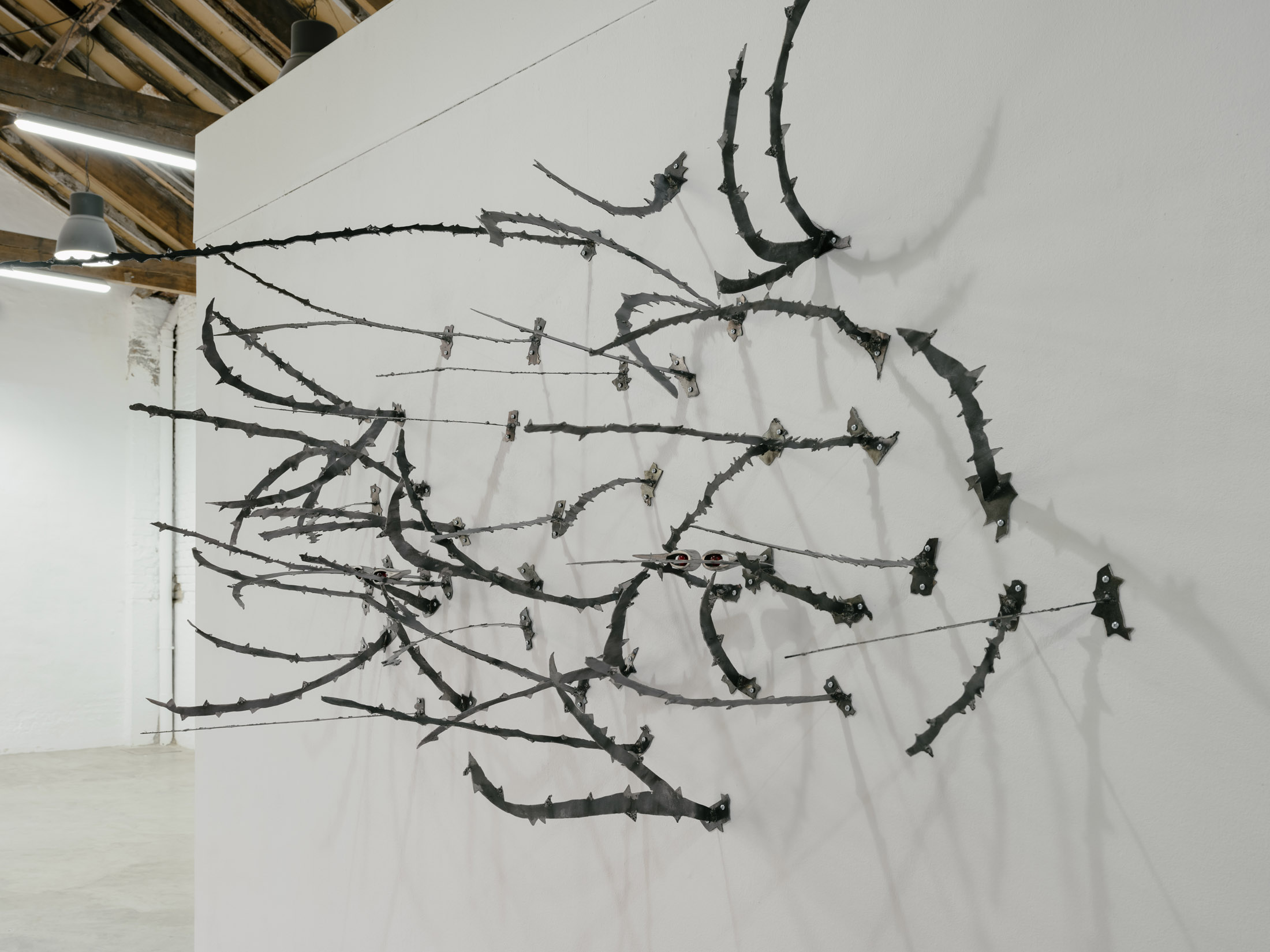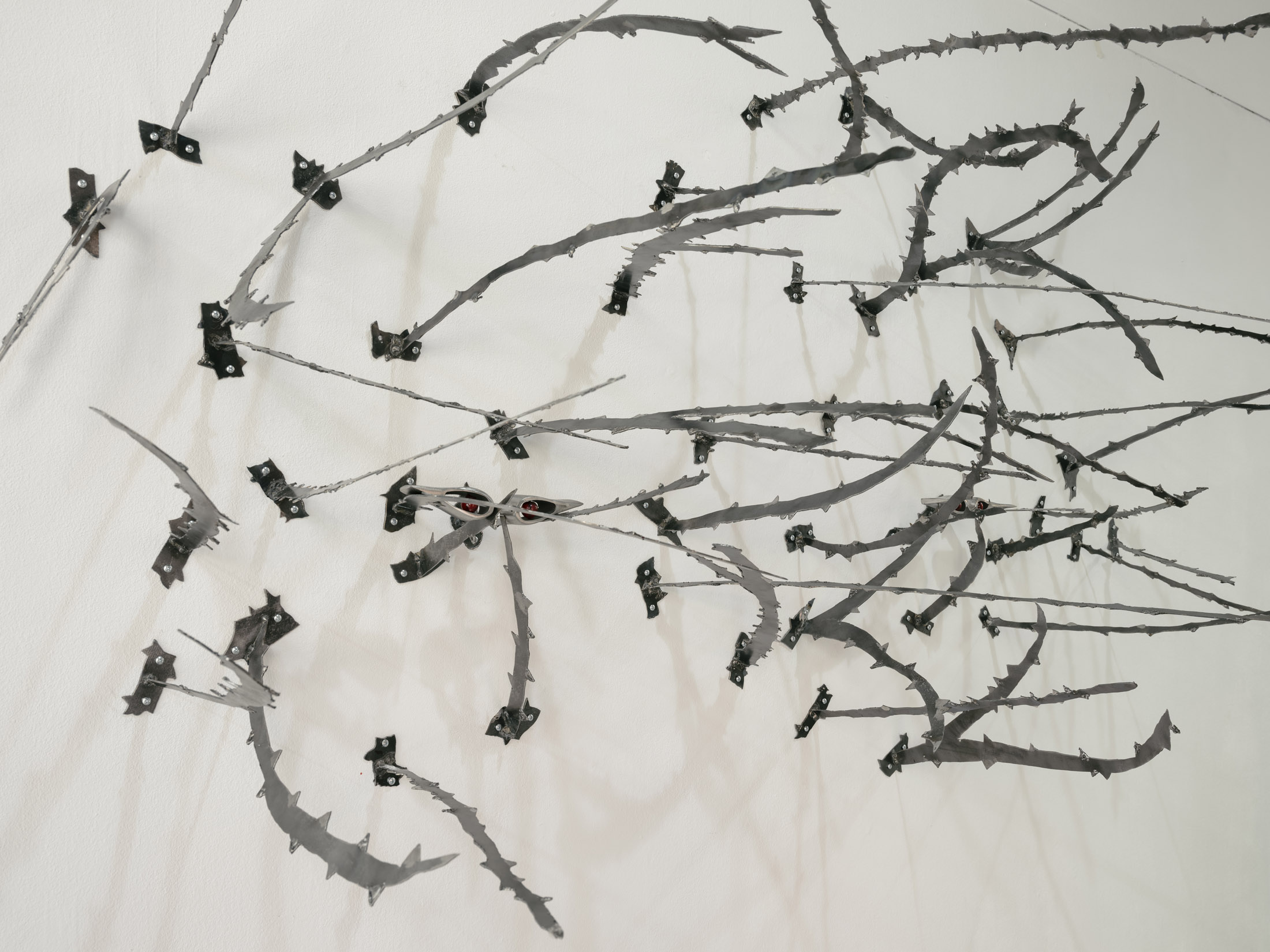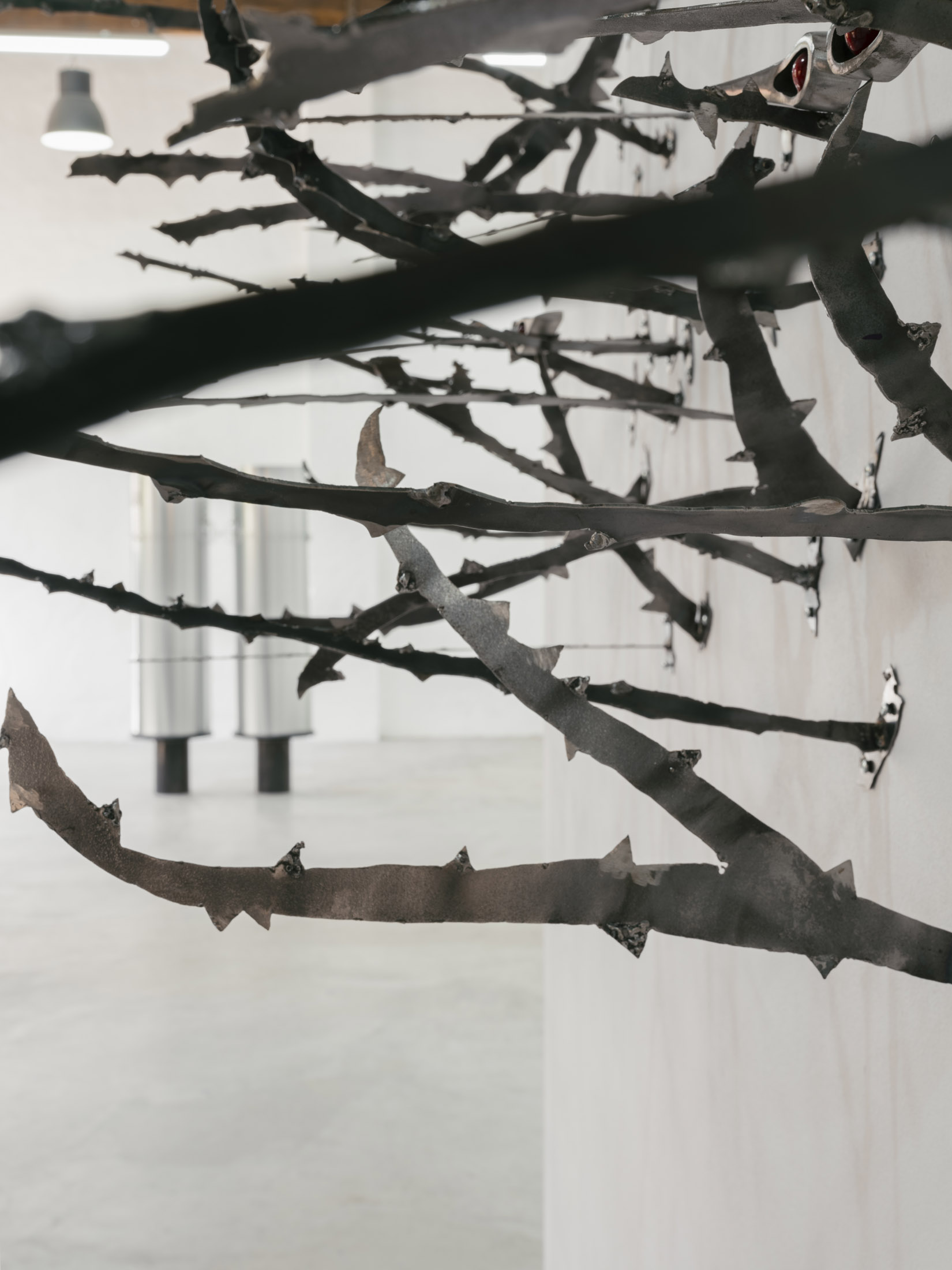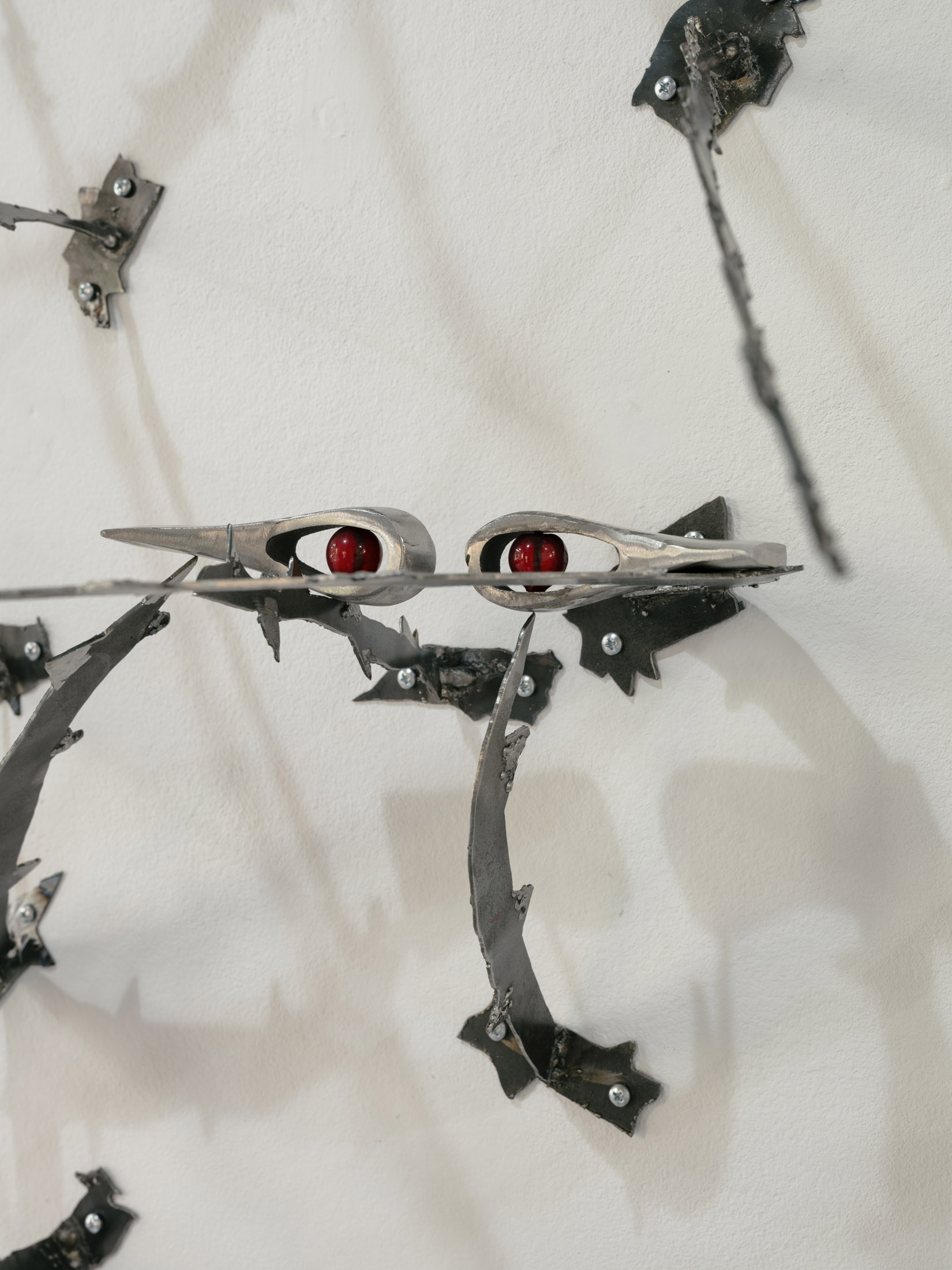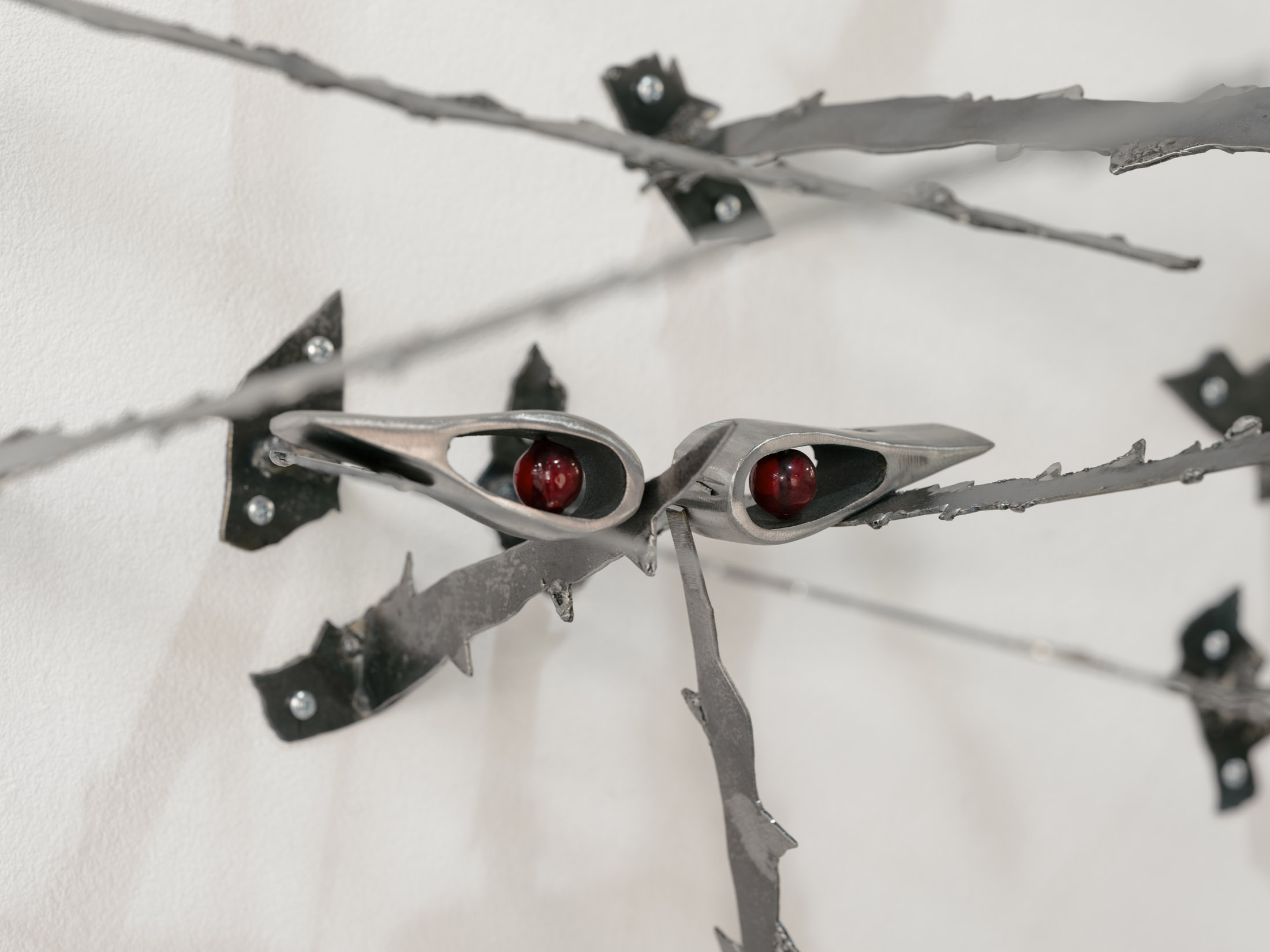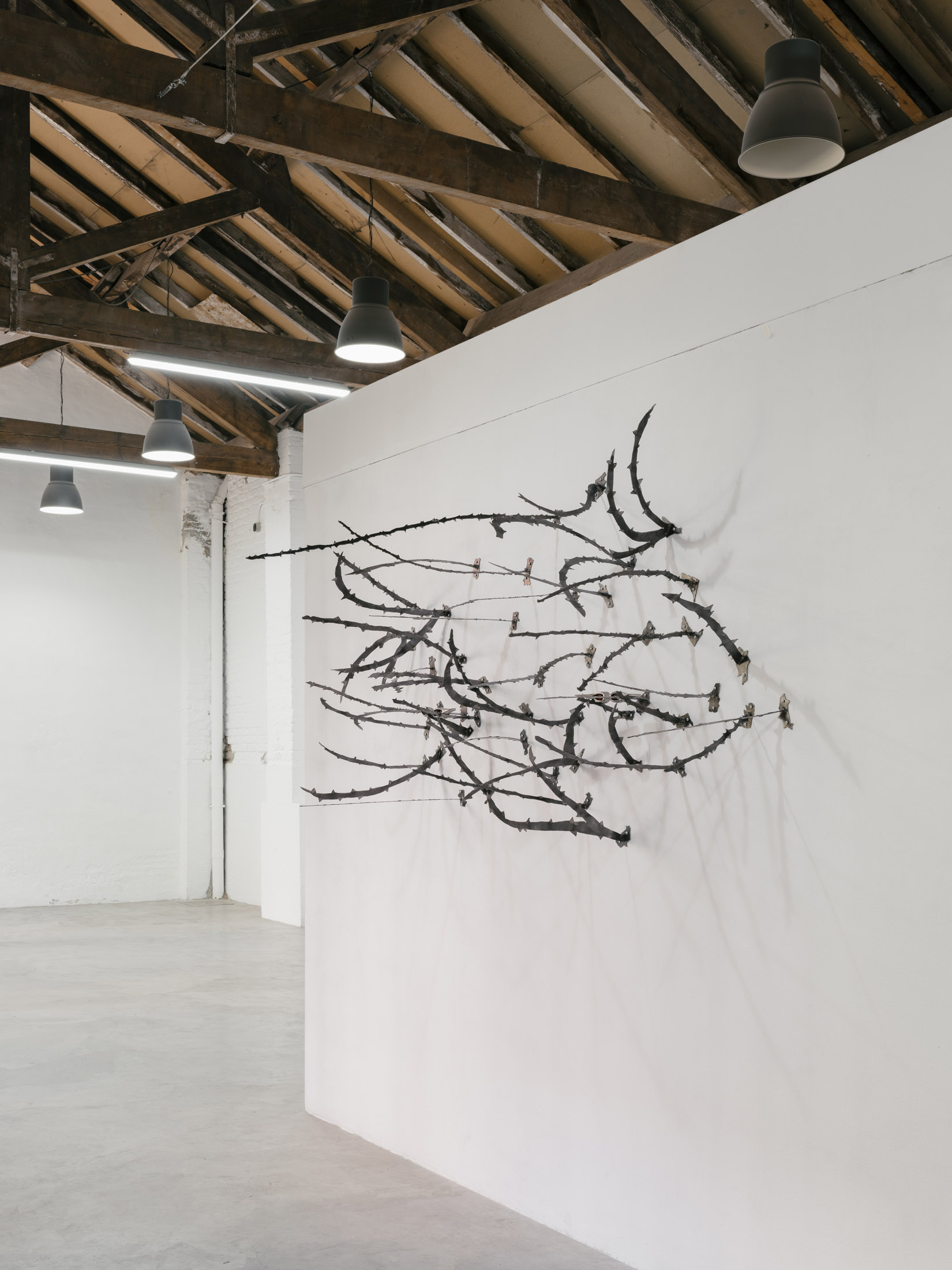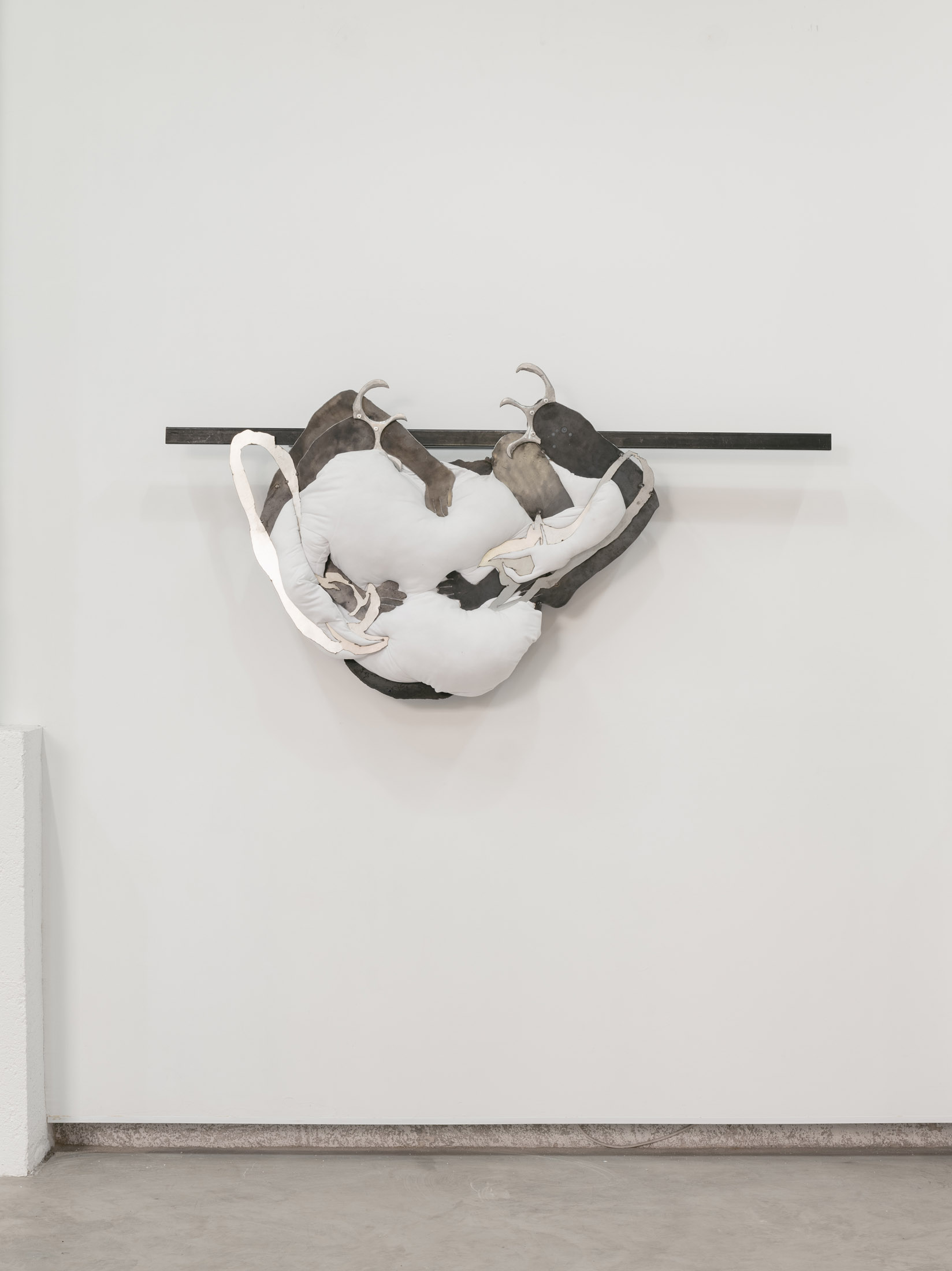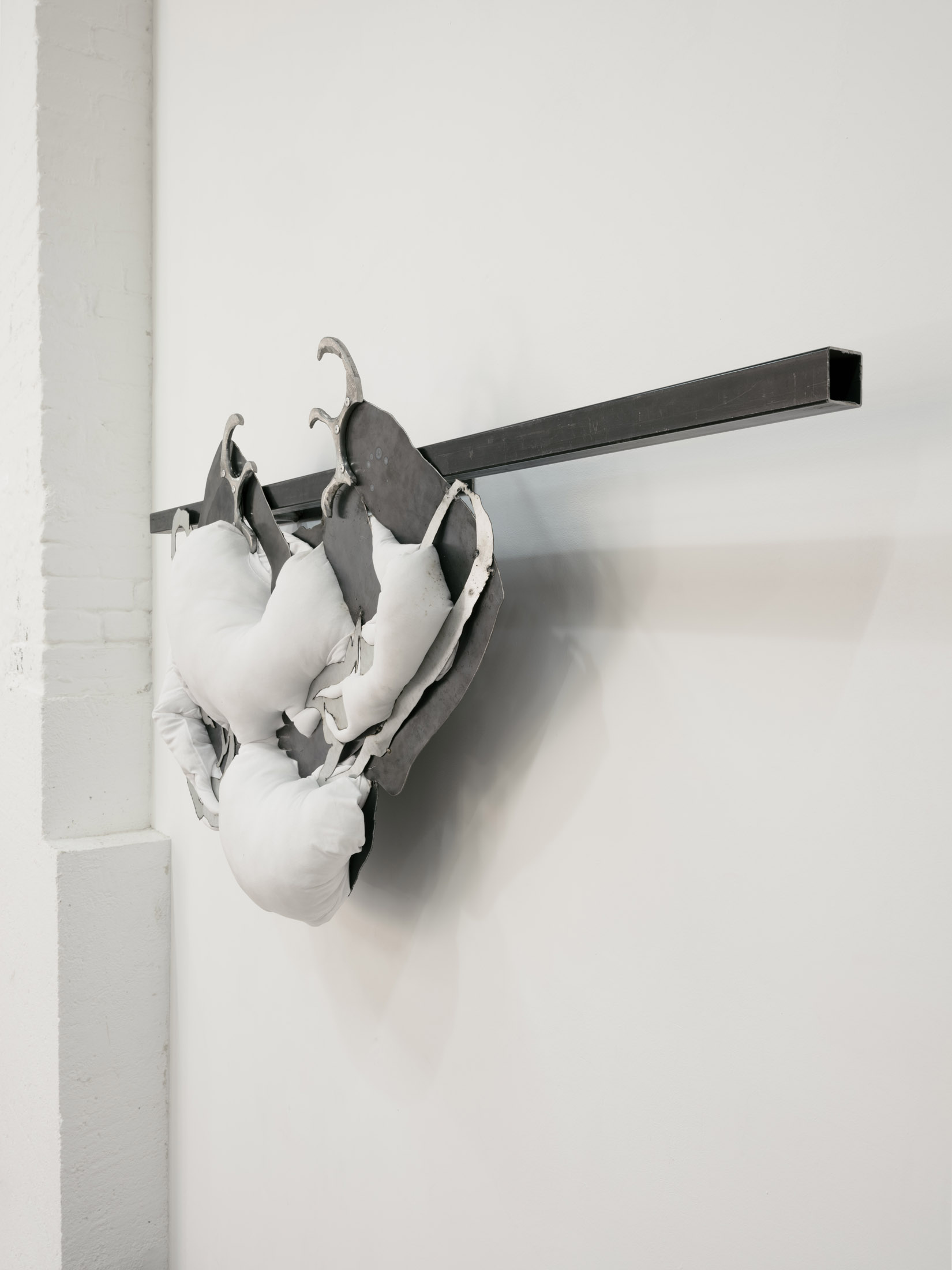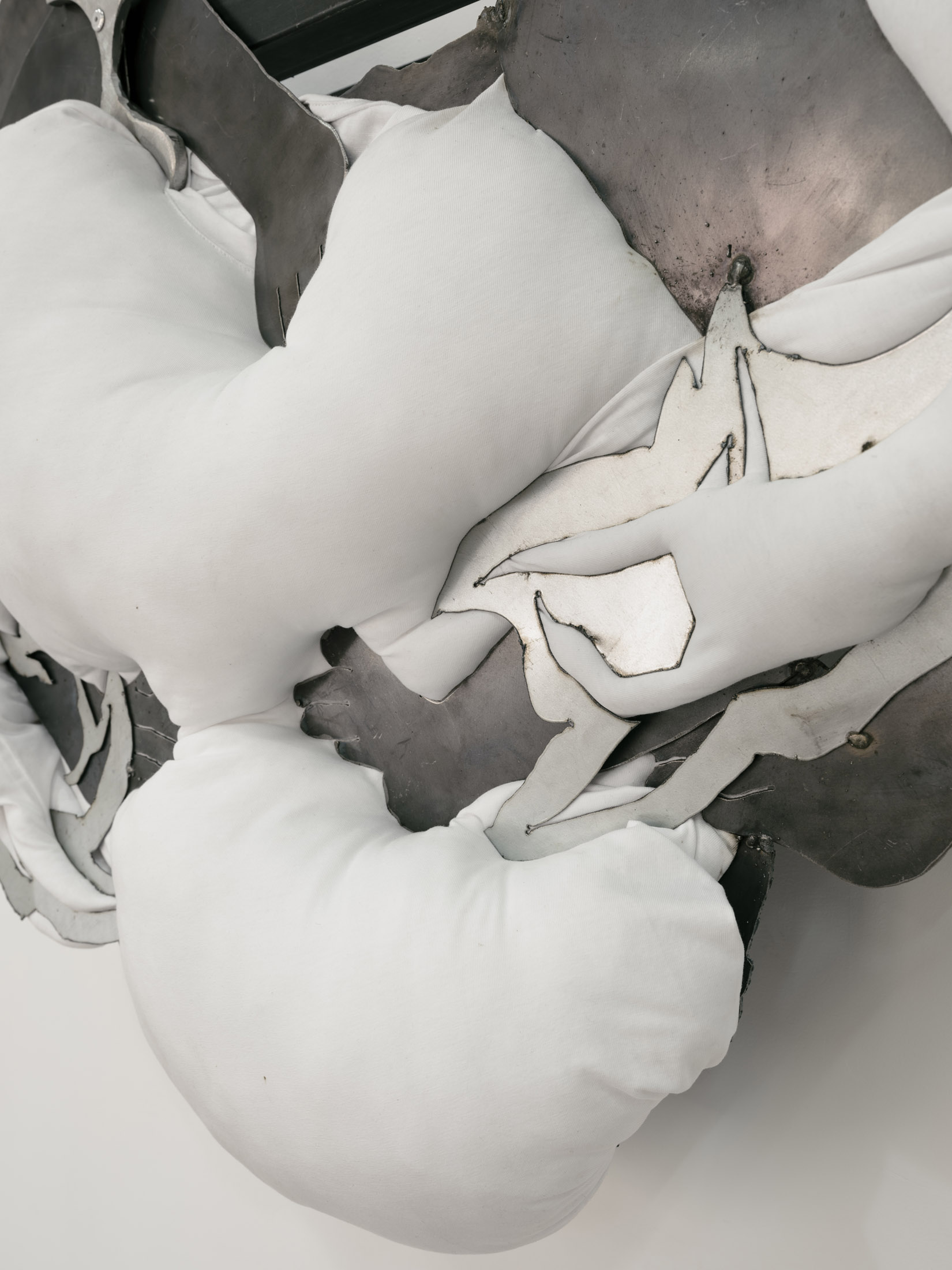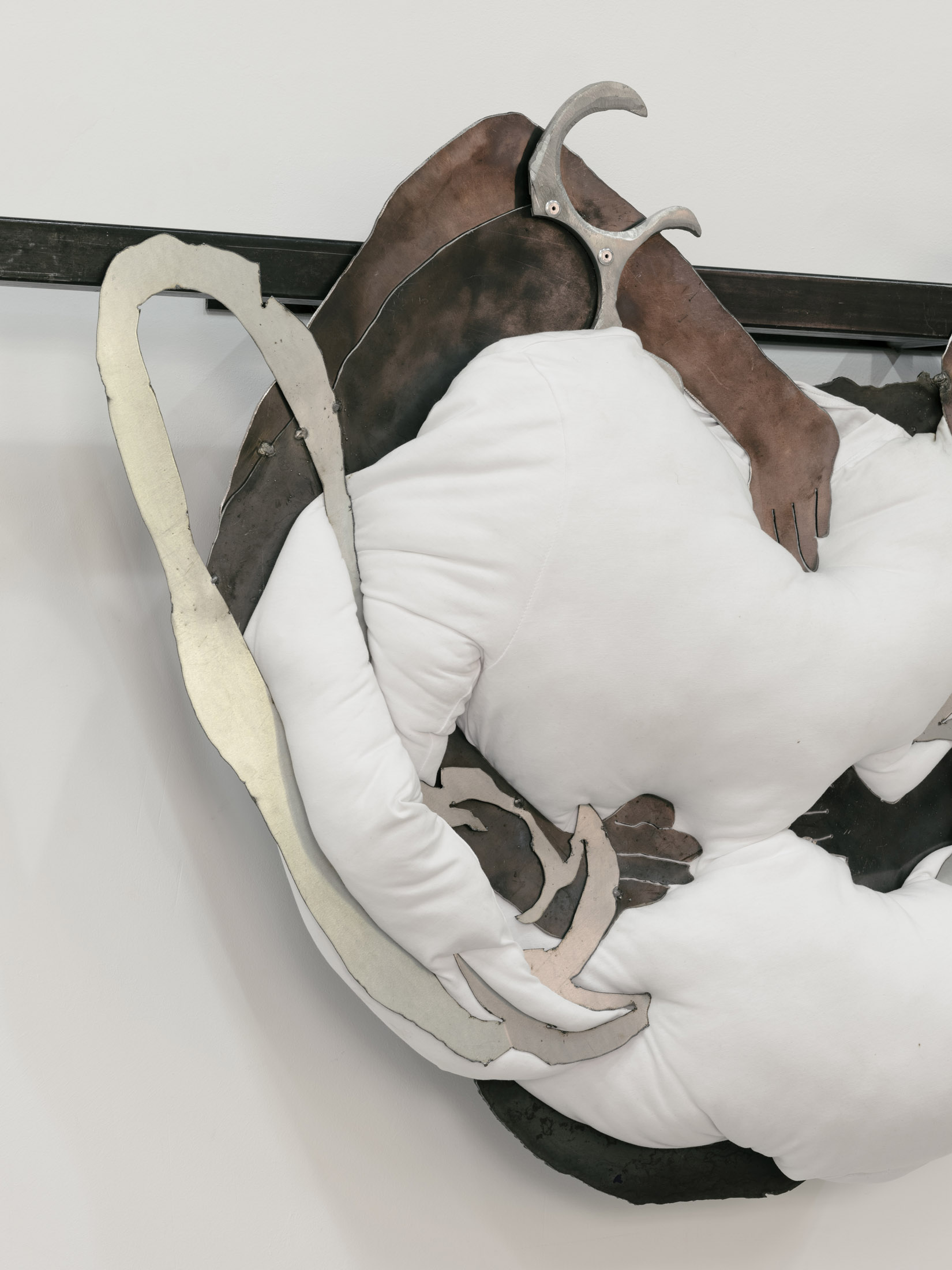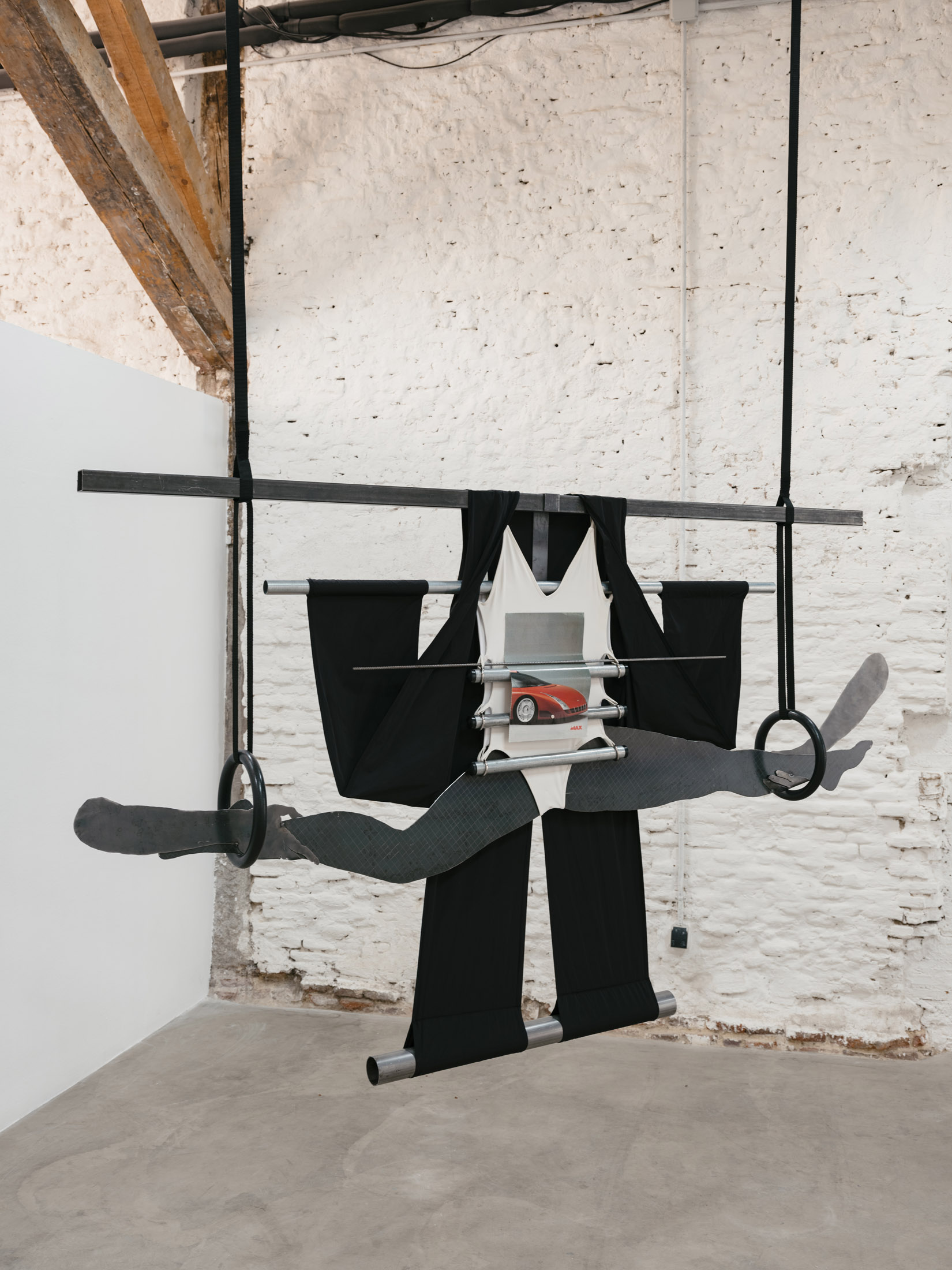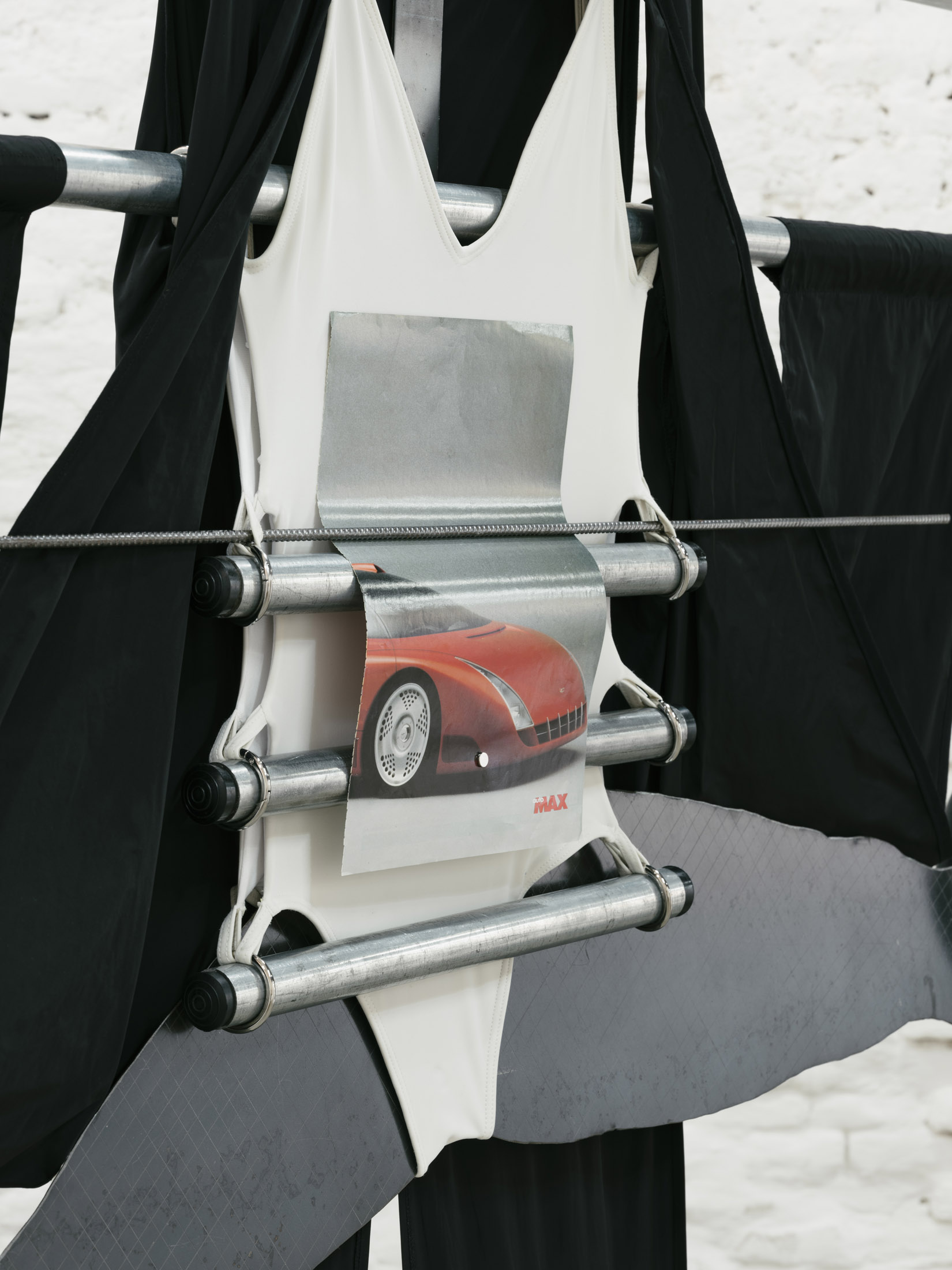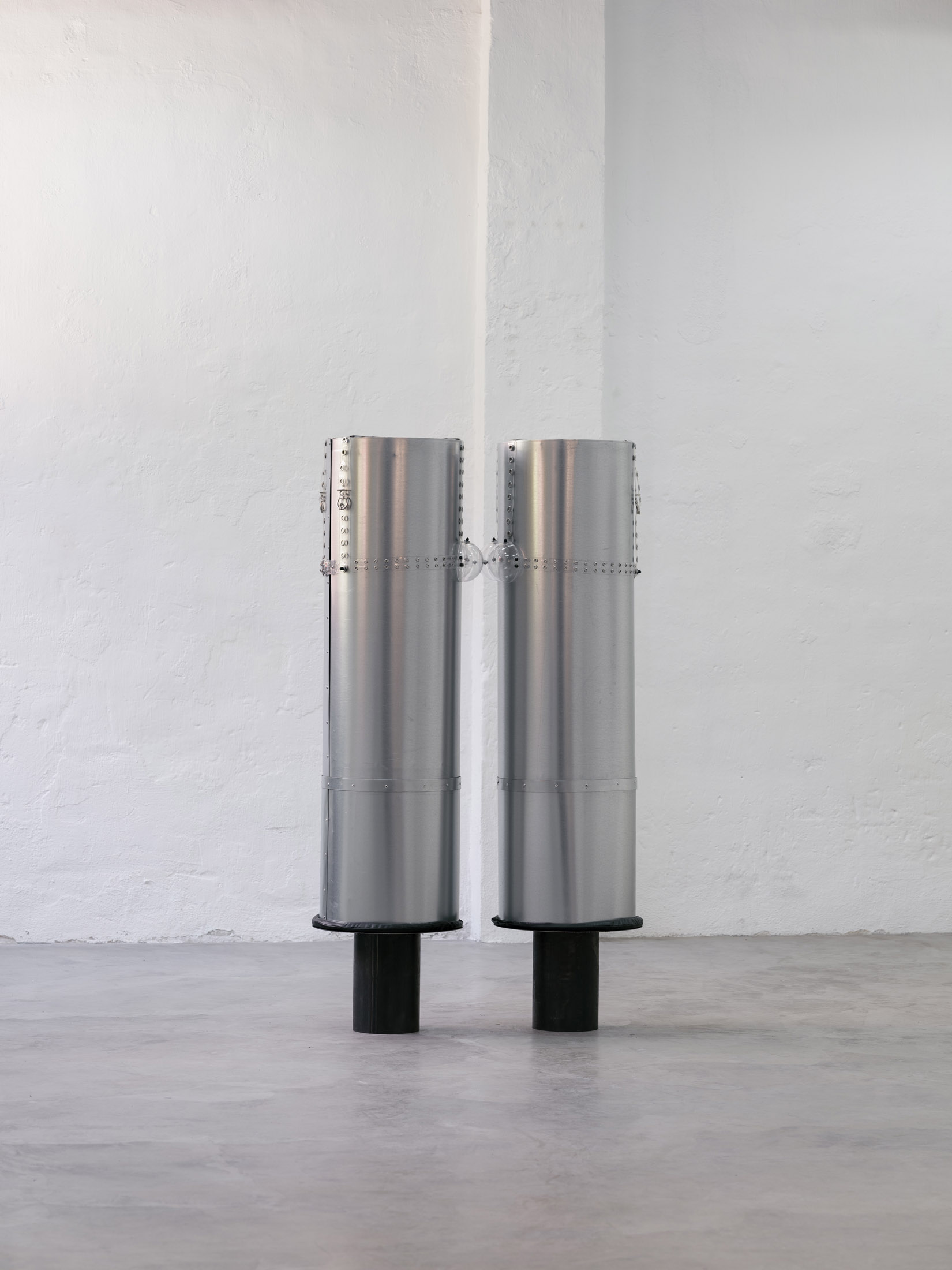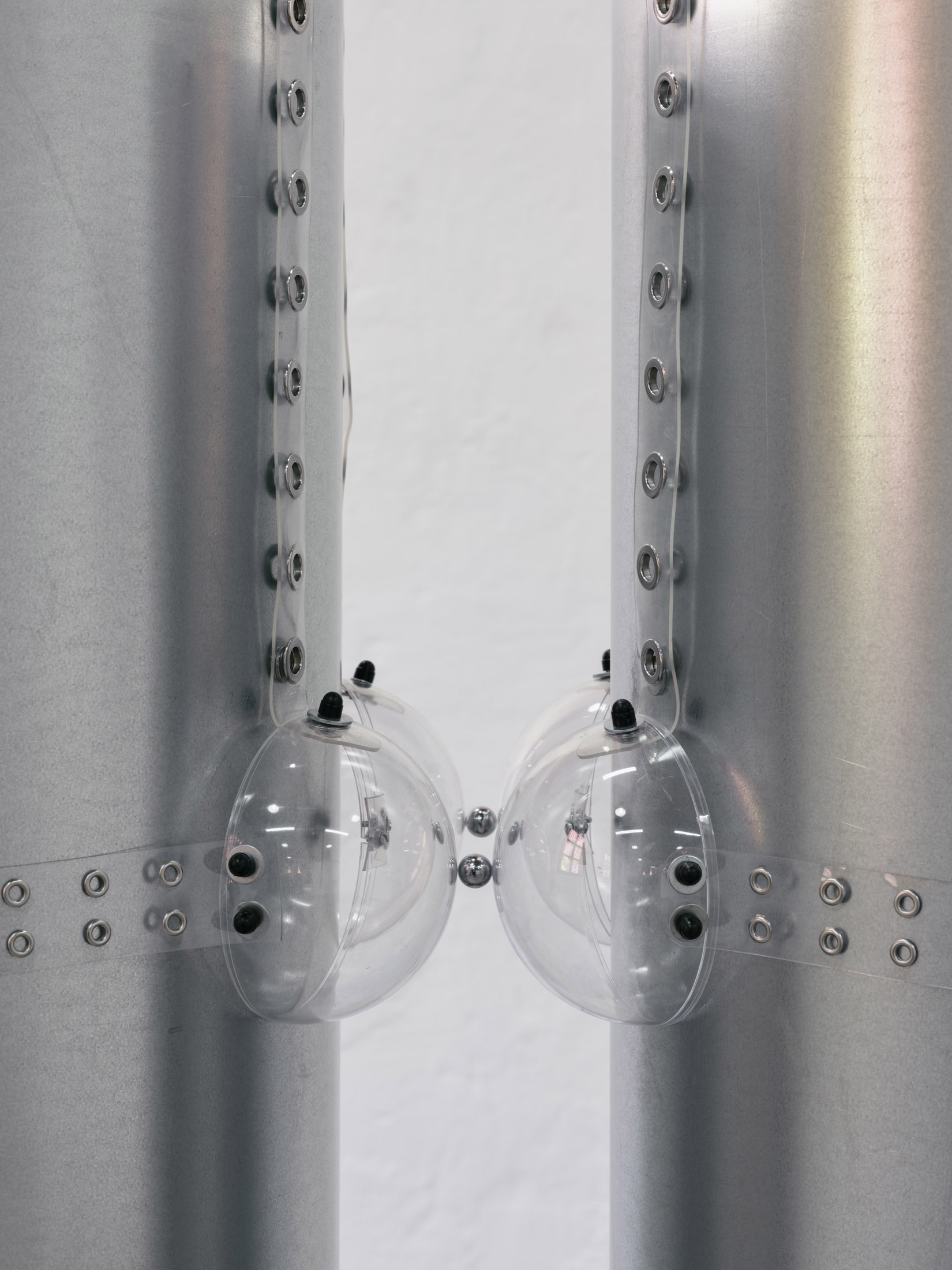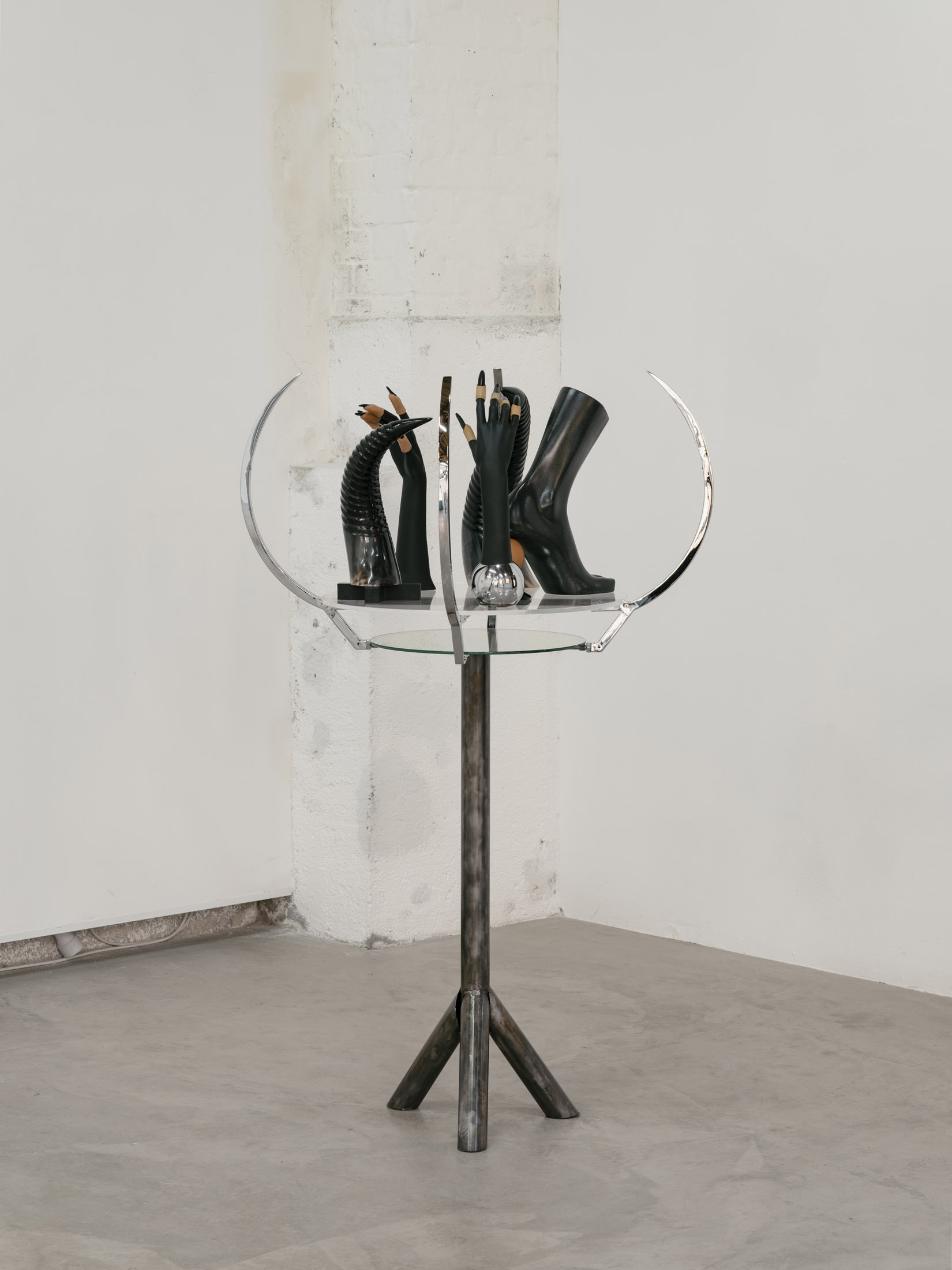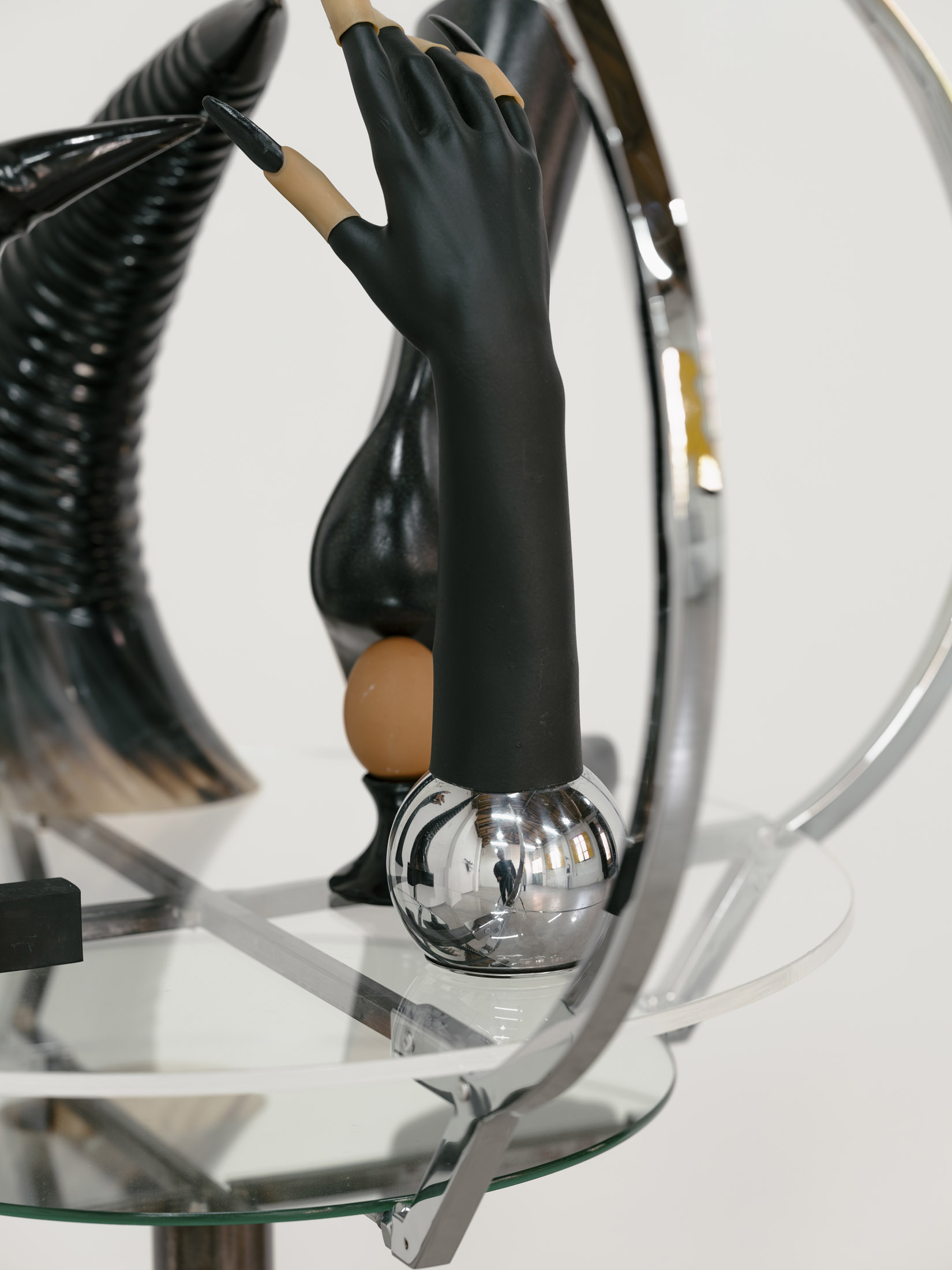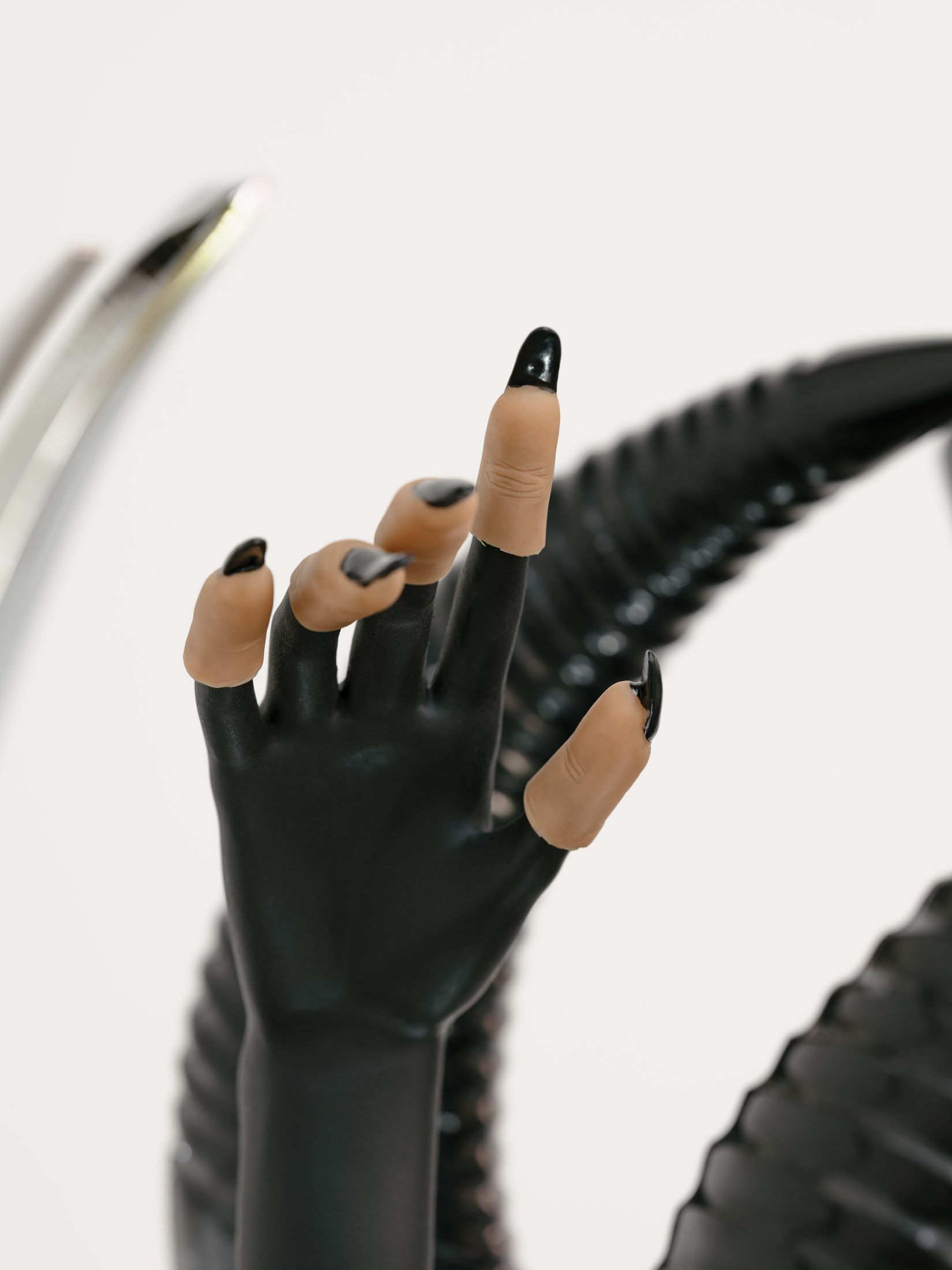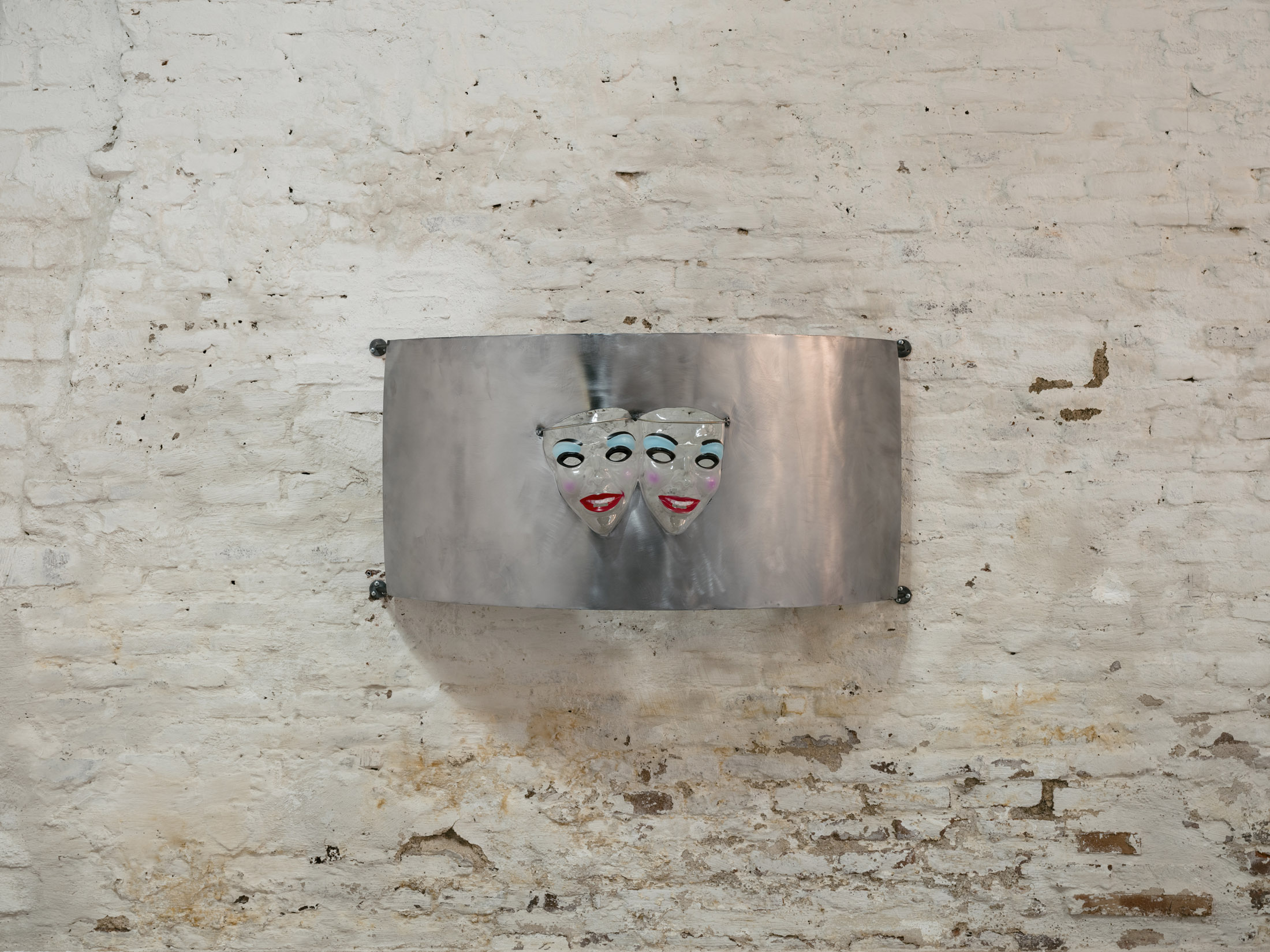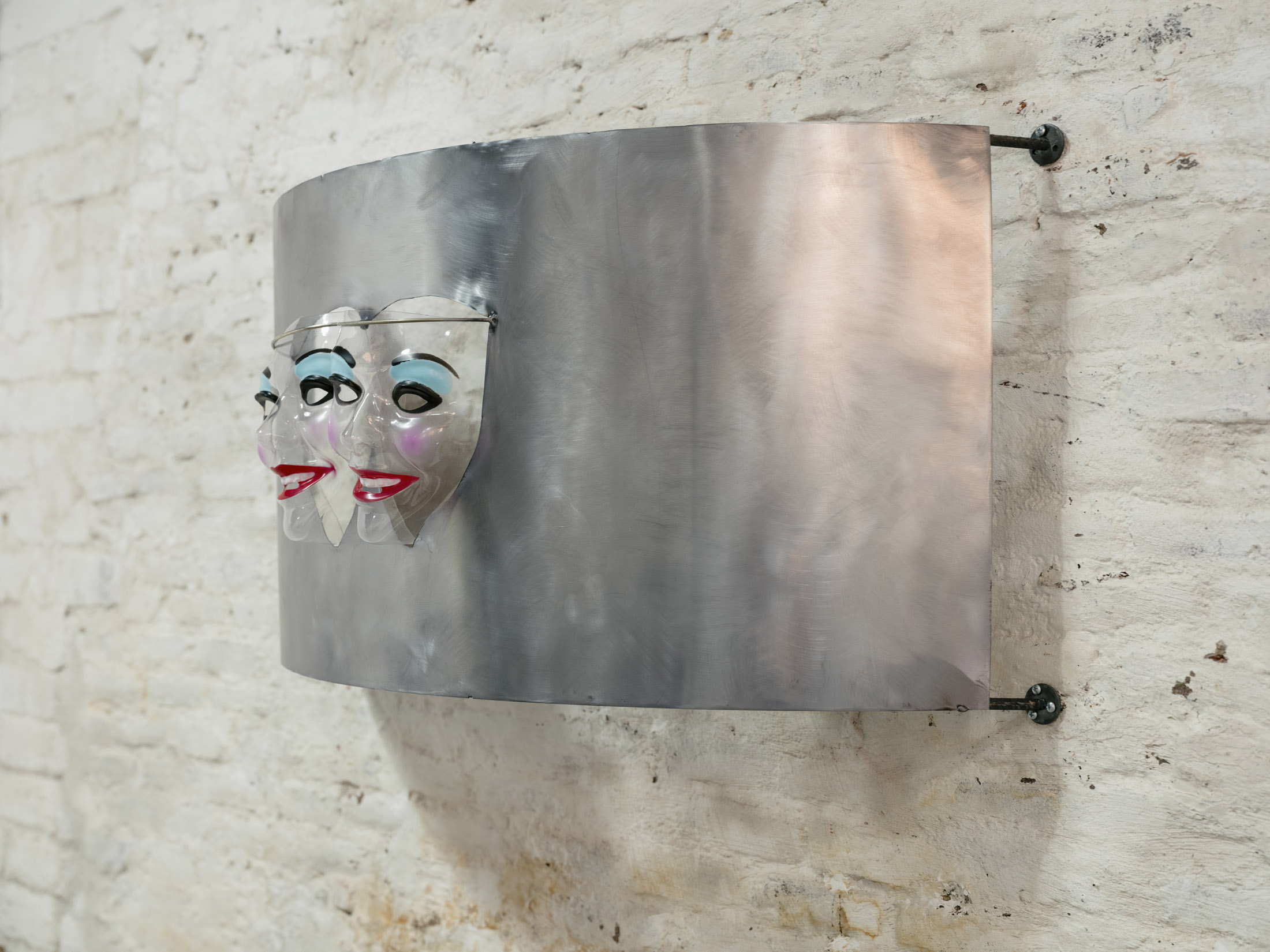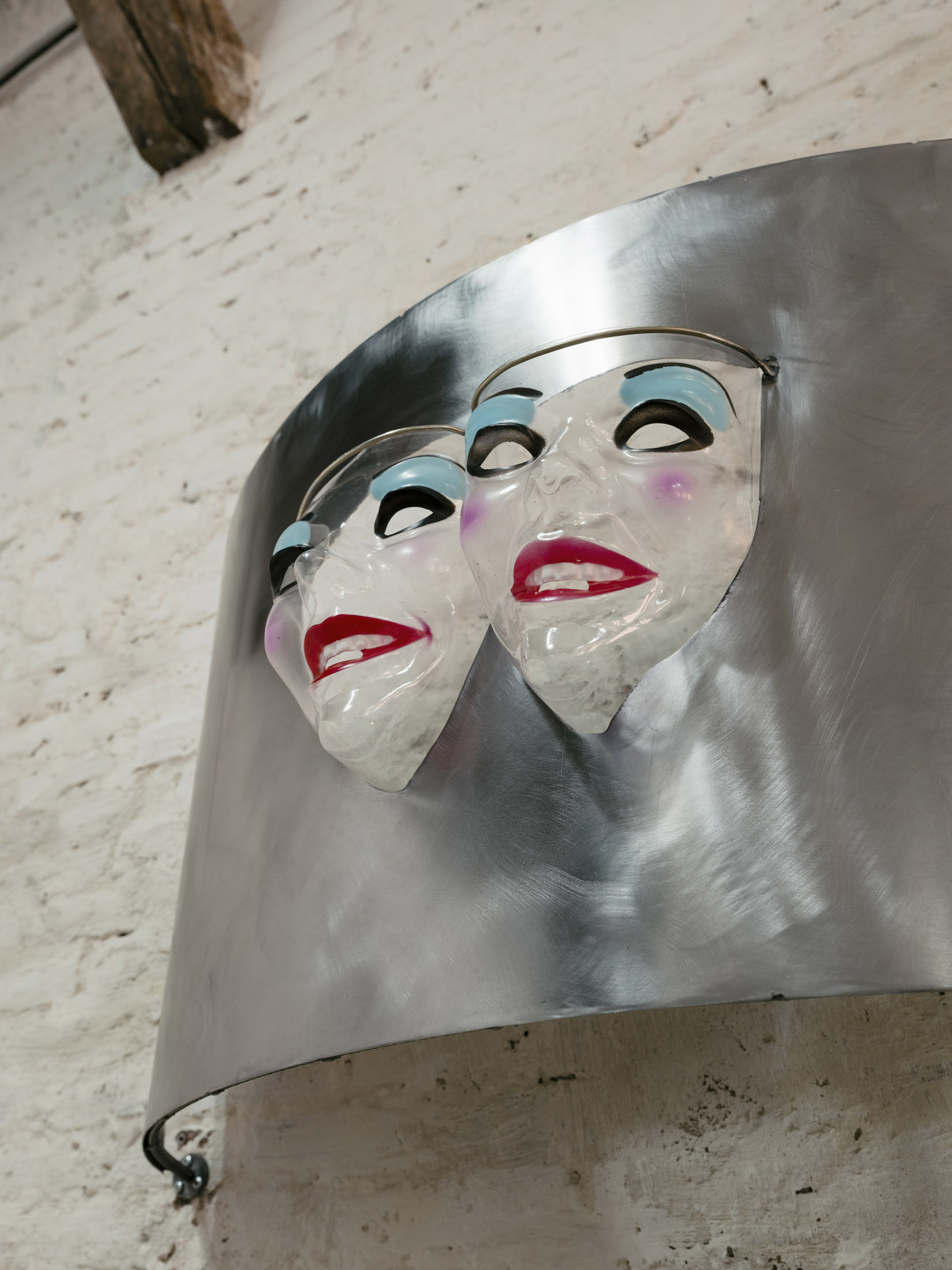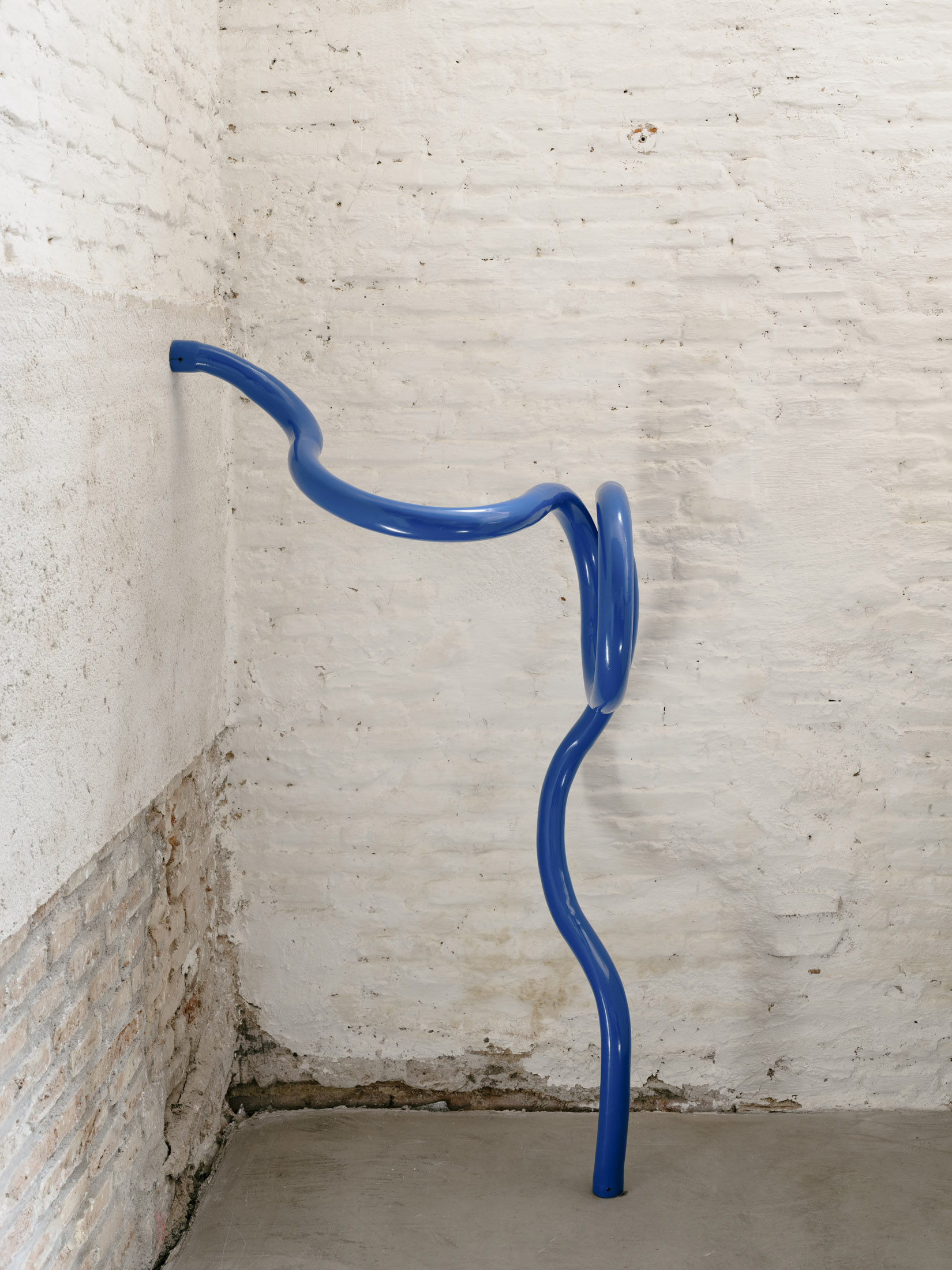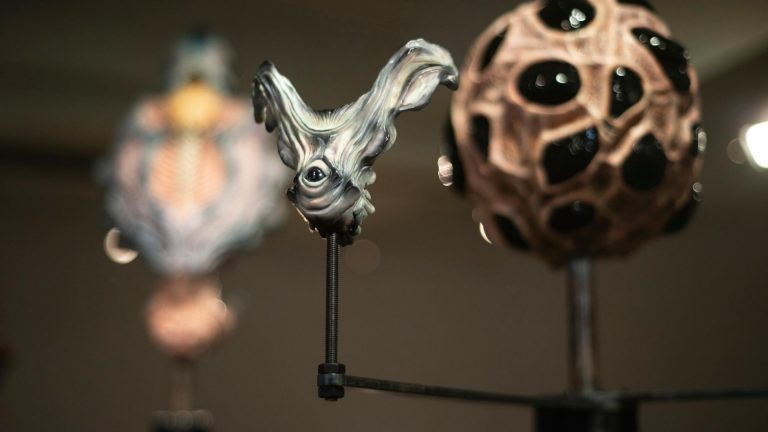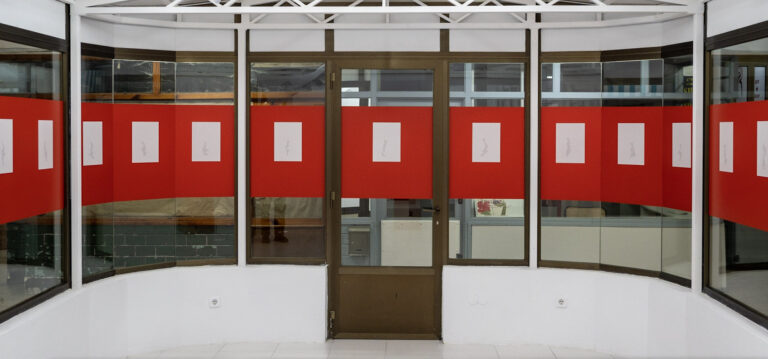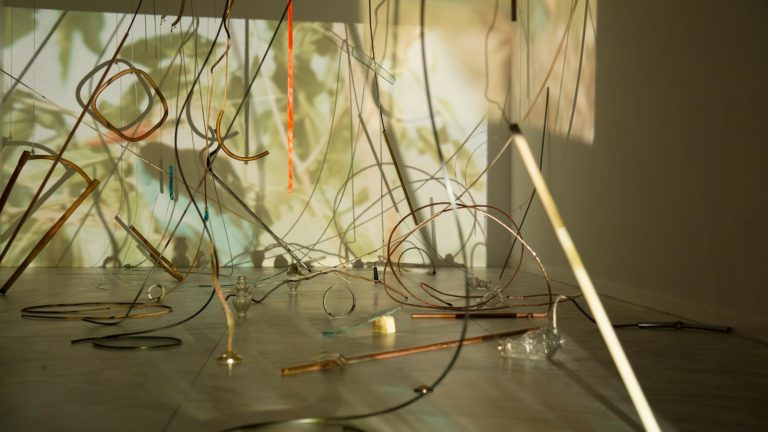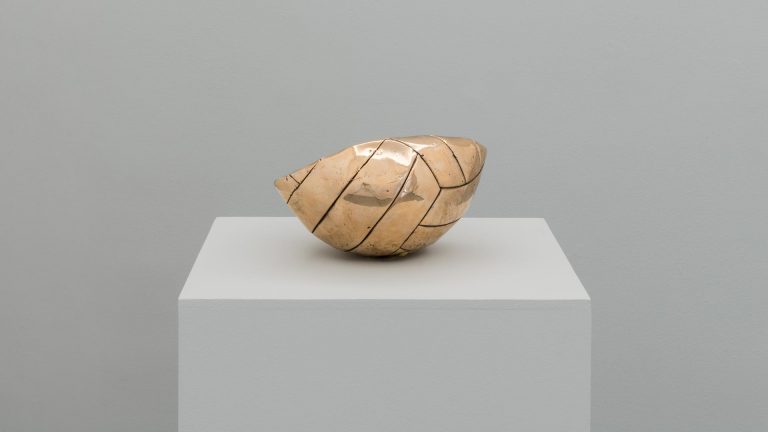Artist: Sahatsa Jauregi
Exhibition title: La mañana está empezando
Venue: The Ryder, Madrid, Spain
Date: April 20 – June 15, 2024
Photography: All images copyright and courtesy of the artist and The Ryder, Madrid
La noche es la siguiente: la mañana está empezando is Sahatsa Jauregi’s first solo exhibition at the gallery, named after a poem by María Salgado. For this exhibition, Jauregi creates a ceremony filled with sculptural bodies that manifest and relate to each other through her artistic practice. The artist constructs a scene where duality or binary concepts are questioned through expanding and stretching forms in dialogue, striving for an almost unattainable balance. Her sculptures walk, run and embrace, primarily in pairs, but also individually, in constant relation to one another. This creates an immersive atmosphere where empty space also holds significance. By occupying this emptiness, visitors feel like witnesses, or perhaps participants, in a gathering, a disquieting celebration where the night has already ended, yet the inhabiting bodies resist departure.
This gathering of works originates from a distinctive line of investigation pursued by Jauregi, wherein the observation of the environment and its documentation considers “what happens” to objects in relation to the world, rather than focusing on their meaning. To achieve this, the artist follows a working process centered on creating photographic archives that compile object-based anecdotes. In these archives, reality—shaped by desire, consumption, or chance—generates new content for these objects, granting them a different agency as they coexist with us. These photographic archives, alongside numerous conversations with friends, sometimes also captured in photos or memories, serve as the source from which Jauregi crafts these evocative sculptures.
In all of these newly produced works, found elements coexist with others manufactured by the artist through her work with metal. This combination of different manufacturing methods, coupled with the representational significance that each work carries, gives rise to a semantic polyphony. In this polyphony, a glass grape inserted at the base of an axe transforms into an eye that stalks the visitor from the undergrowth of metal brambles. This uneasy situation persists throughout the entire exhibition where everyday objects are reorganised to seek new dissident semiotics based on alliances occurring in the artist’s creation process. These alliances are not premeditated but rather occur naturally, and it is in this almost accidental occurrence that their power lies, imbuing each of the sculptures with a scandalous humanity. This humanity appeals to our empathy, to our memories, to those boots we once longed to wear, to those sneakers where we replaced the laces to make them uniquely ours.
The tension between the signifier and the signified, between the part and the whole, is also manifested through works where we perceive couples, double figures touching each other, individuals holding onto one another, relying on their connection as one would rely on a prosthesis to walk. This tension between seeking bodies is also related to Salgado’s poetry, which lends its title to the exhibition. In her poetry, words refer to sweating bodies, smelling like “After parties,” reminiscent of an extended night invaded by the light of day that will reveal relationships in which “you” and “I” can only be explained within a multi-layered “us”.
La noche es la siguiente: la mañana está empezando invites the visitor to occupy an uninhibited space, much like a room that suddenly transforms into a dance hall, or a park that becomes a cruising spot at night. These places, whose meaning is based on what the present imposes on them, allow bodies to express themselves differently and adopt unexpected forms depending on their needs and desires. These sculptures give shape to all of the above; they have occurred there and come to us as witnesses of a possibility, of an event that happened and could happen again.

